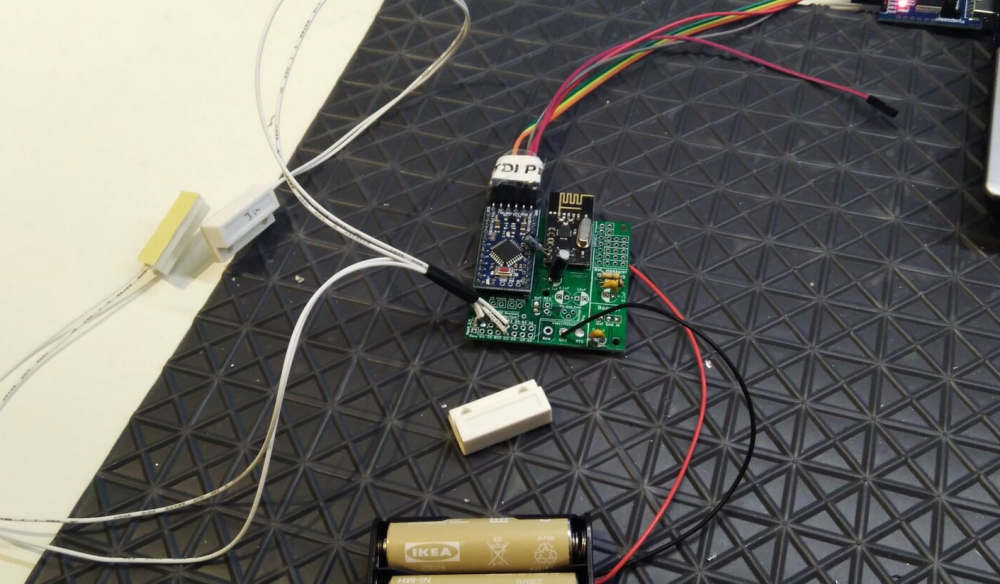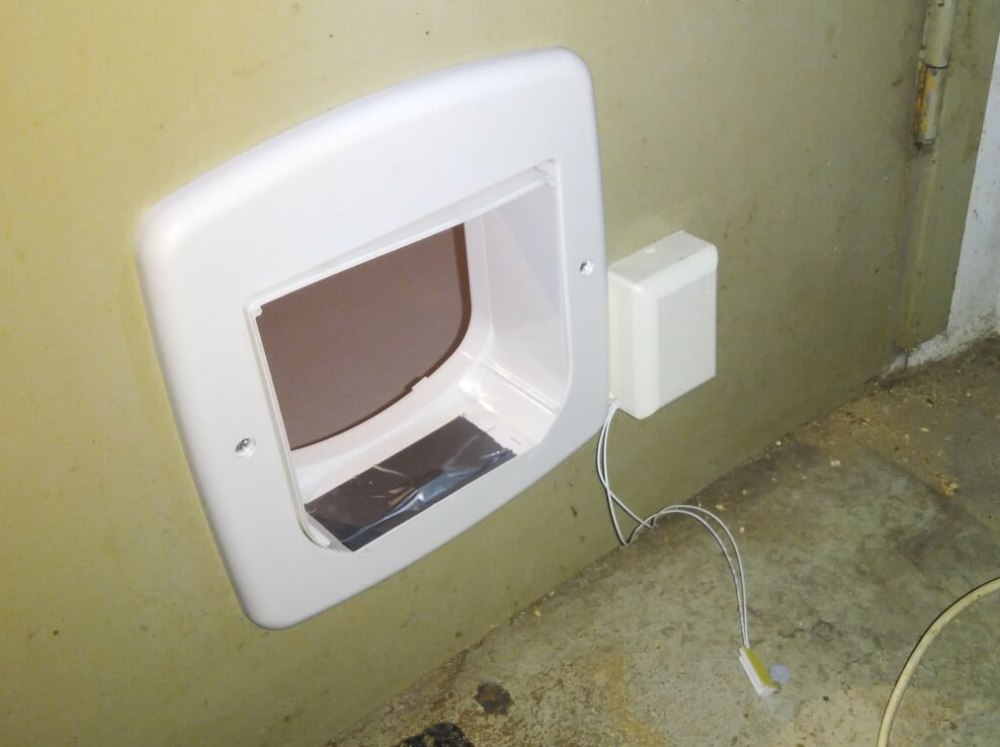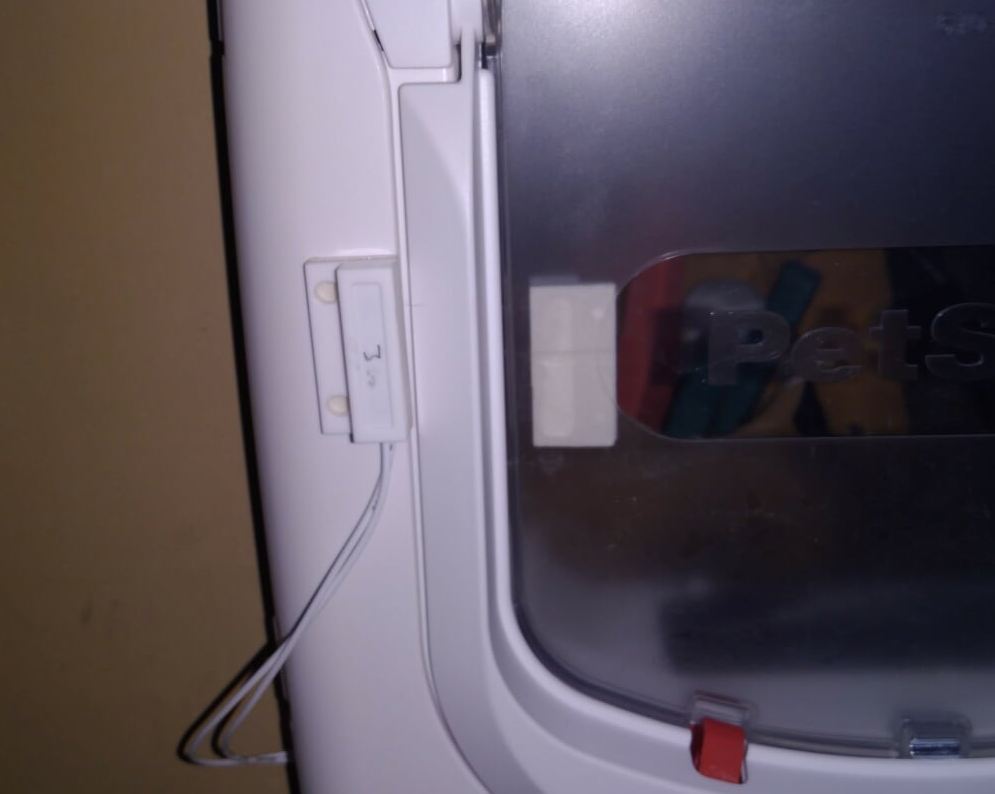What did you build today (Pictures) ?
-
So I finally finished my motion sensor project and it works

It will be published on OpenHardware.io soon
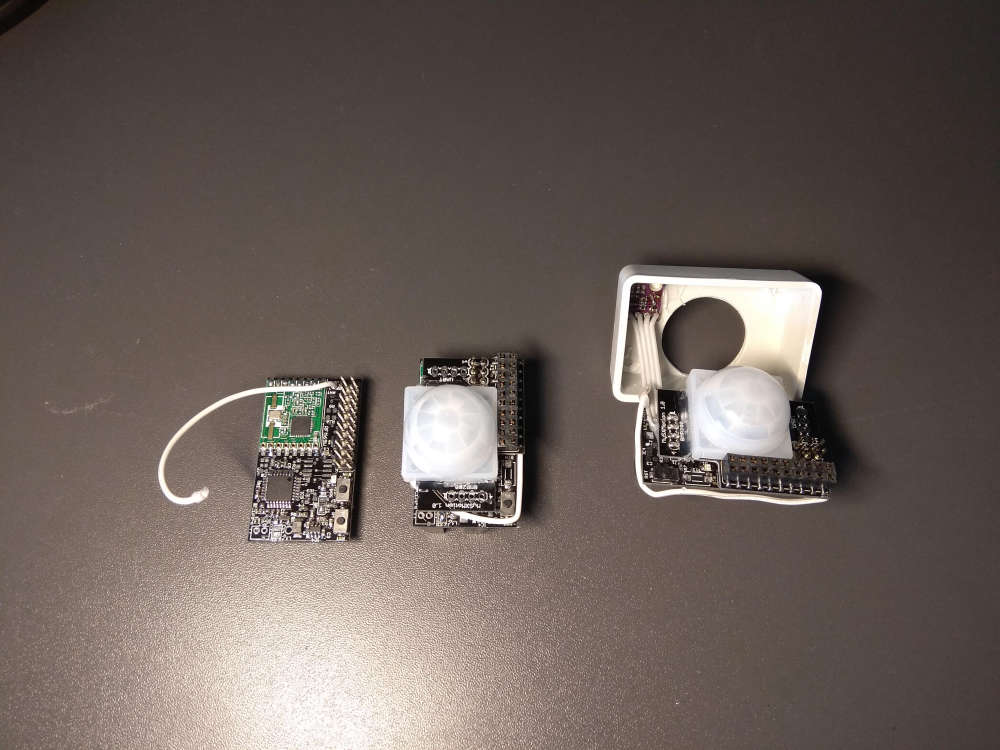
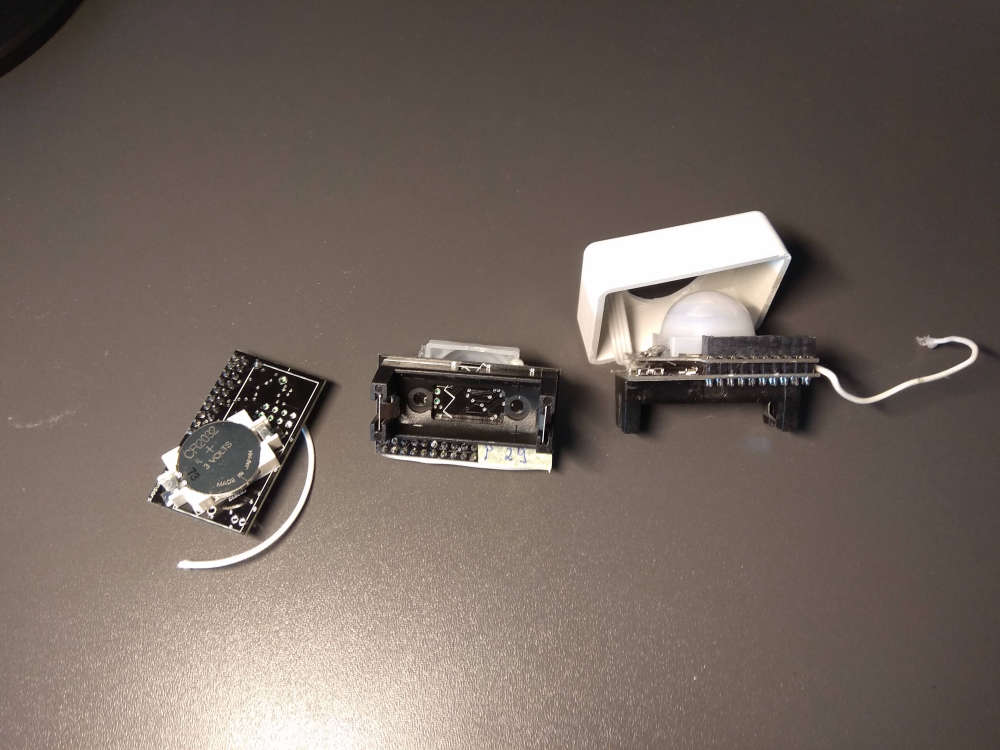

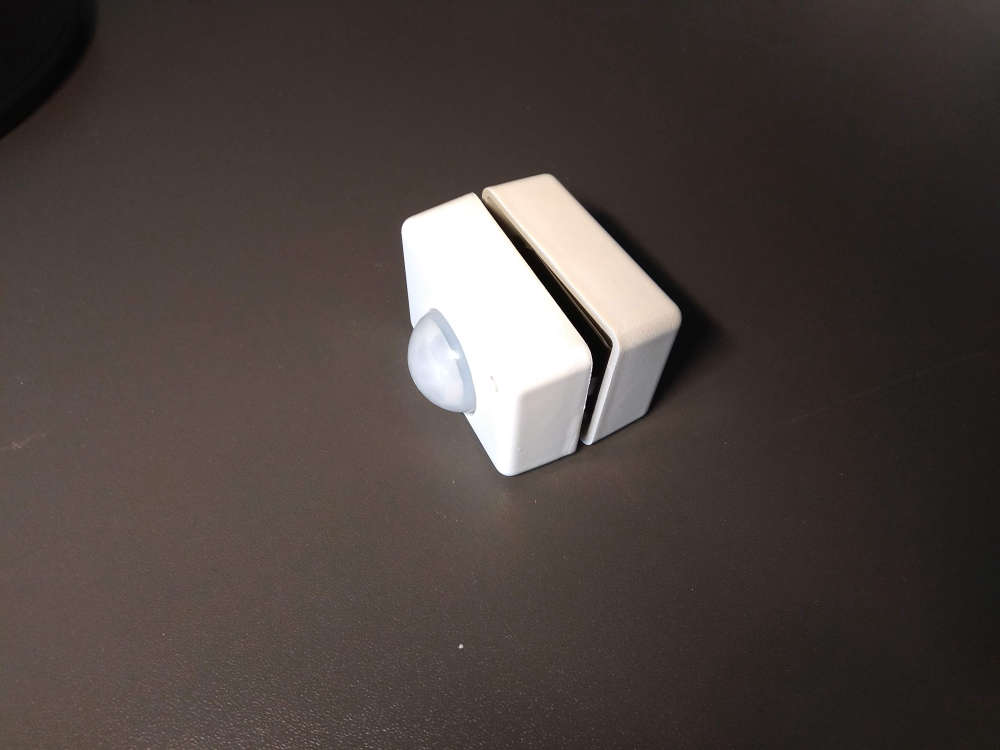
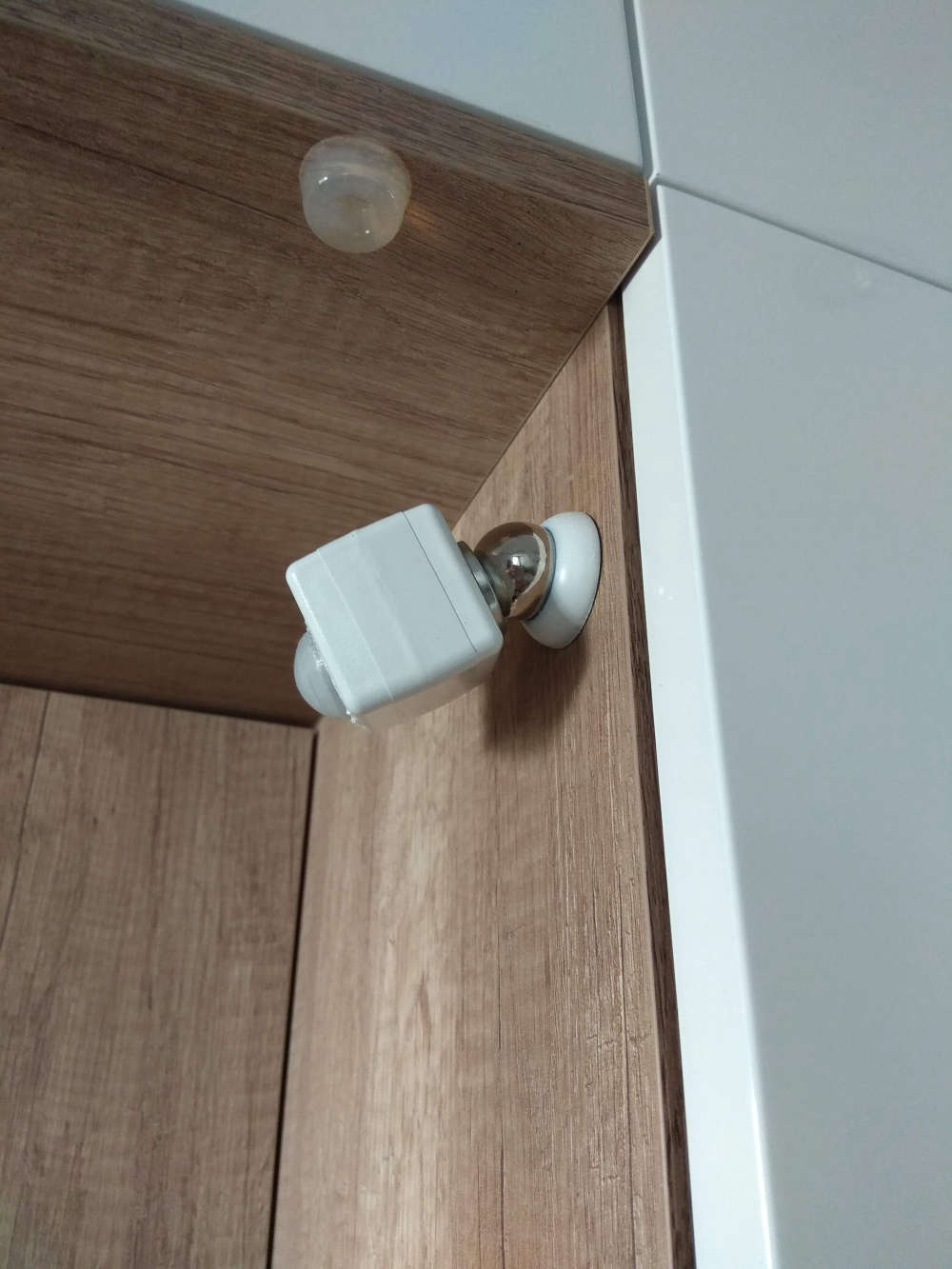
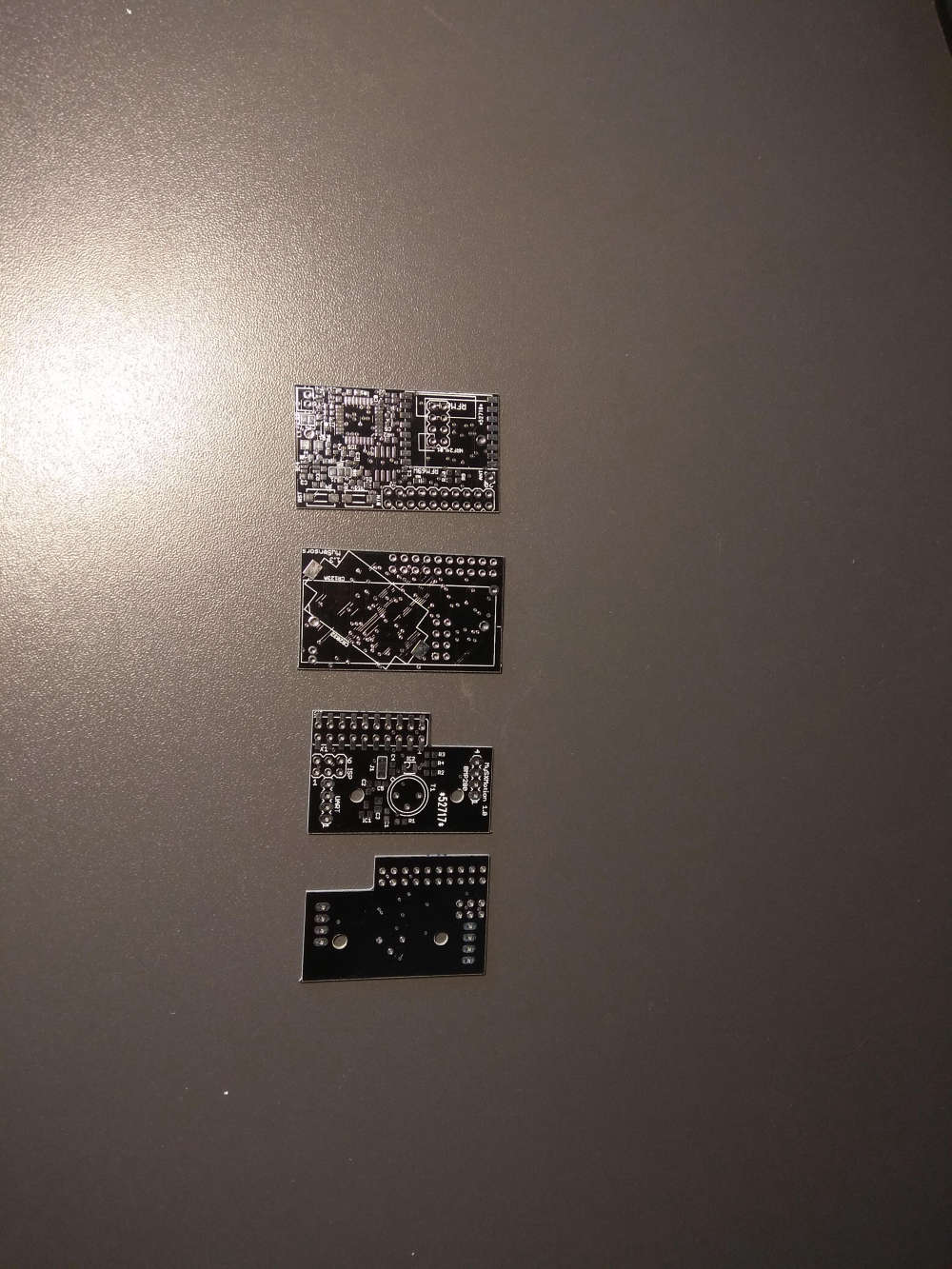
-
And also finished my toolkit library for MySensors for faster code developement (https://github.com/mczerski/MySensorsToolkit). Example projects (https://github.com/mczerski/MyMultiSensor).
-
@rozpruwacz nice & small motion sensor, good work!
Where did you get the swivel to mount it to the wall?
-
@Yveaux I get it from the polish suplier (https://hurtowniaimport.pl/291-bb1-uchwyt-magnetyczny-samochodowy-do-telefonu-gps.html) but if you google for "magnetic phone holder 360" You wil get similar mounts.
-
-
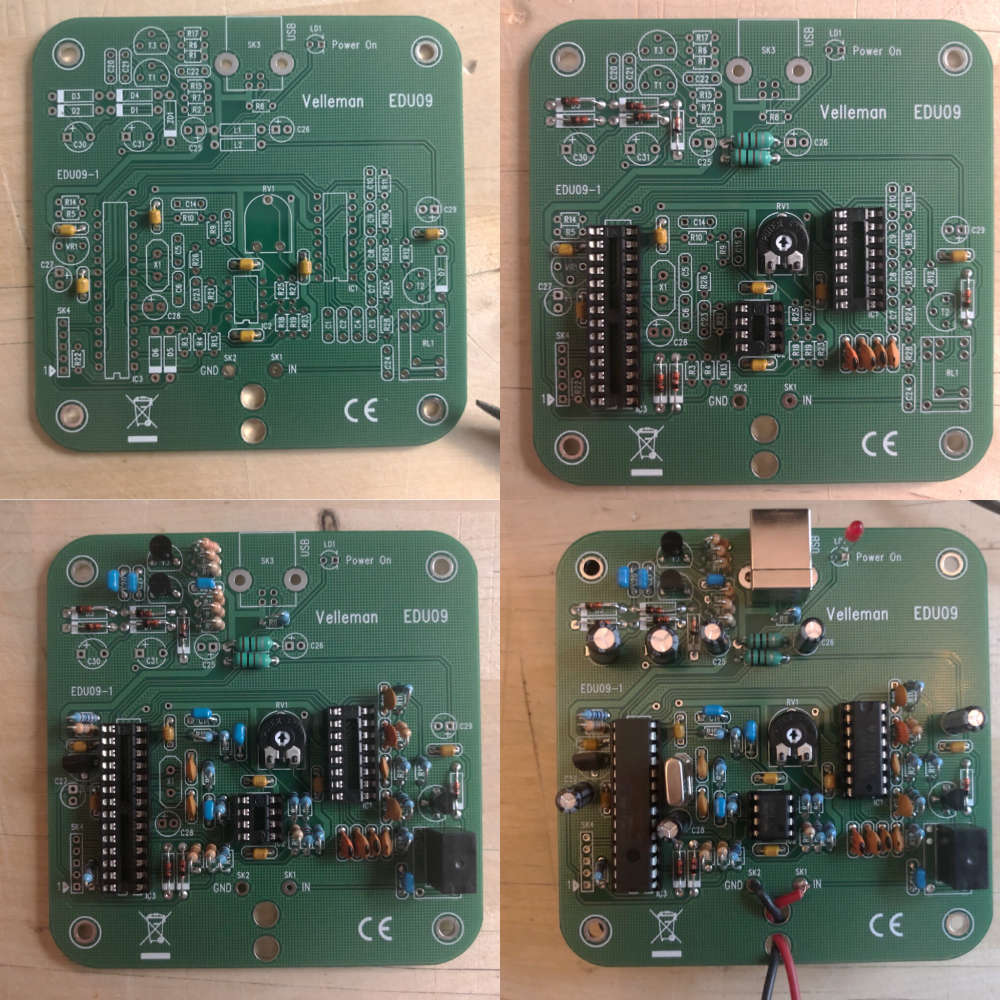
Today I soldered the Velleman EDU09 oscilloscope kit. The kit is quite cheap (~50 EUR in local store). The specs aren't impressive (max 200kHz and min 100mV/division) but hopefully it can help me learn how to use a scope before I buy a real one.
-
Not at all mysensors related, but I have been busy building a bartop mame cabinet the last week or so.. Still mis a couple of details, but it is in a "playable" state right now.
The setup is using an old 19" lcd monitor that I had in surplus with a RPI-3B on the back, a couple of cheap Chinese arcade controllers, a partly homebuild audio hat for the rpi (adafruit i2s 3W amplifiers), and a switchmode capable of 5V @8A (if I remember right), and 12V @3A. So I have power for the marque lighting as well..
Only game available right now is Bubble Bobble, and the kids loves it (as seen in the video linked to below).
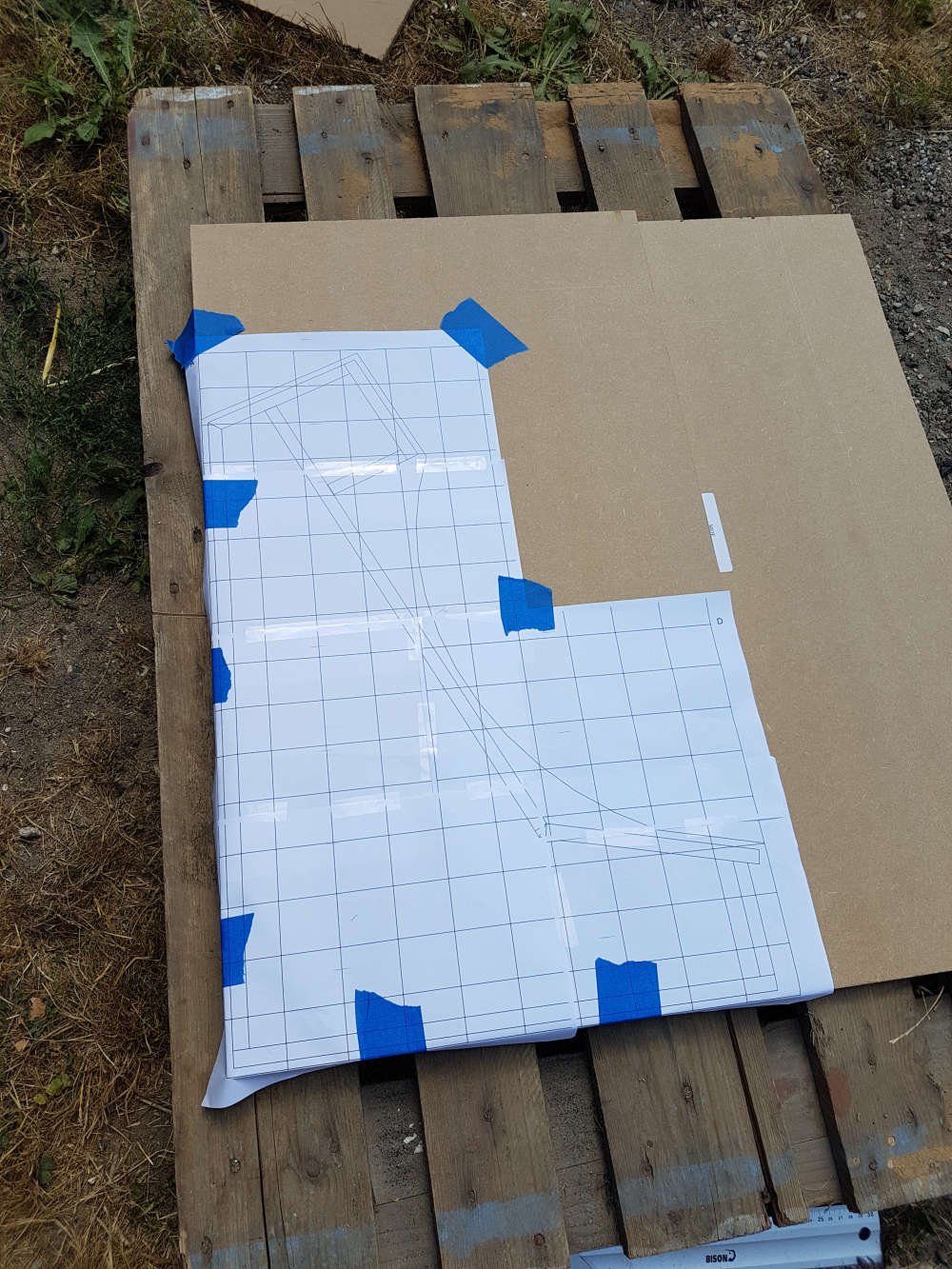
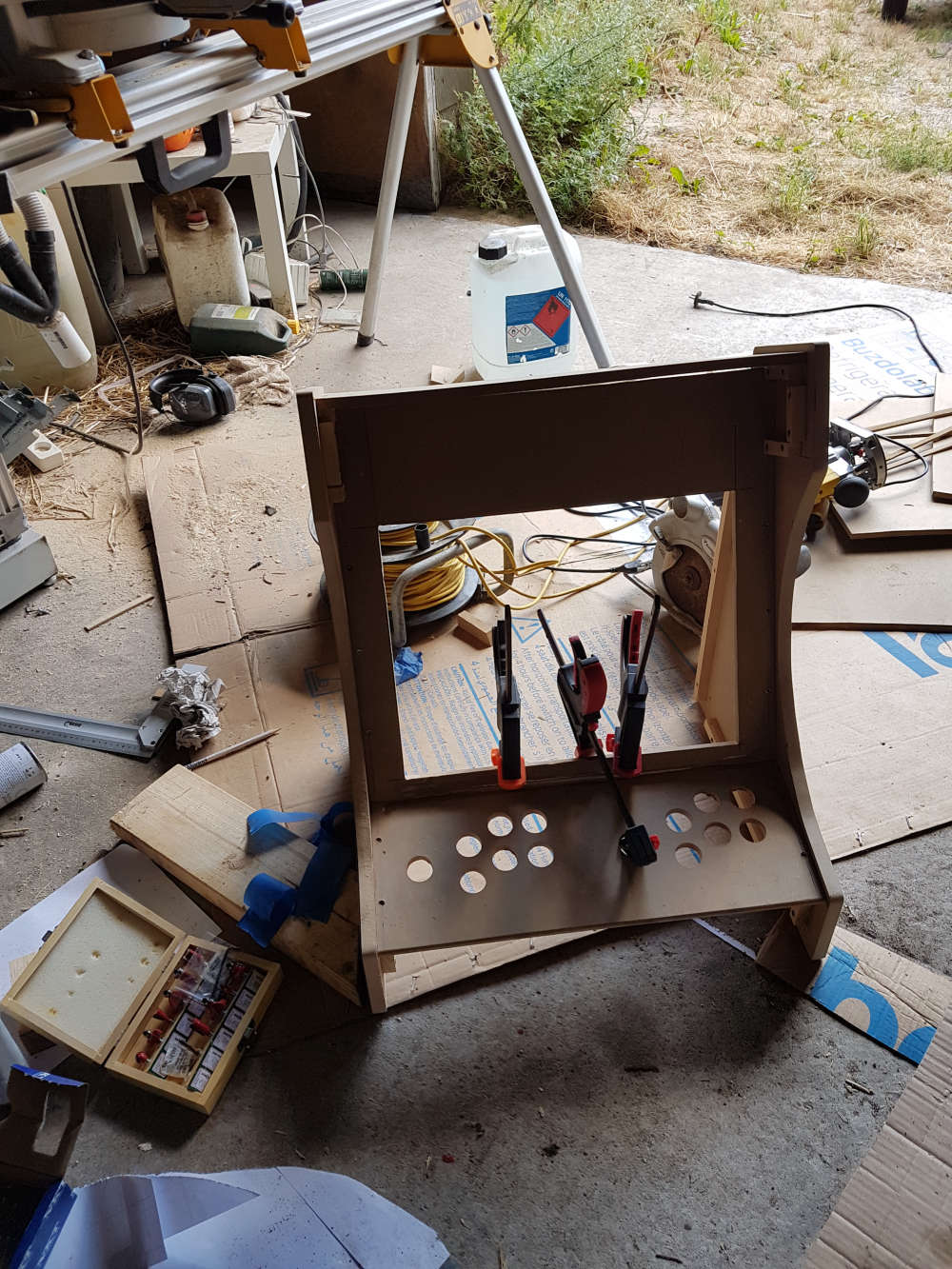
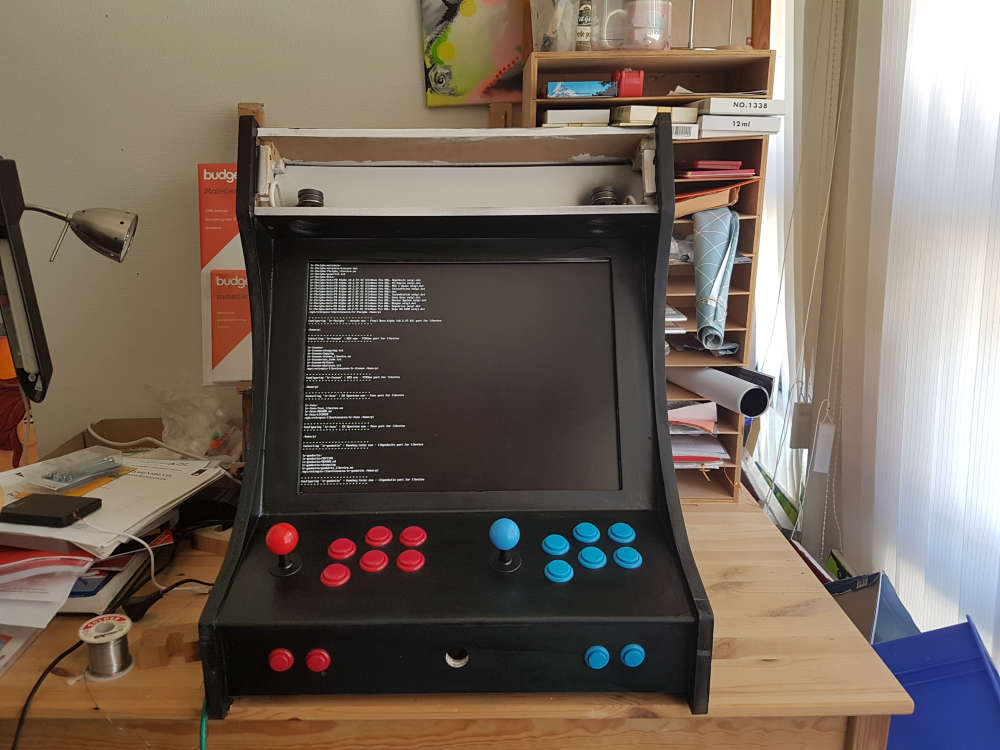

Retro arcade first game – 00:29
— Thomas Bowman Mørch
-
@tbowmo
Quite impressive arcade game
-
For this project box that I'm making (actually printing it as I type this), I found an easy way to add ventilation: use a hex infill and turn off the upper and bottom layers.
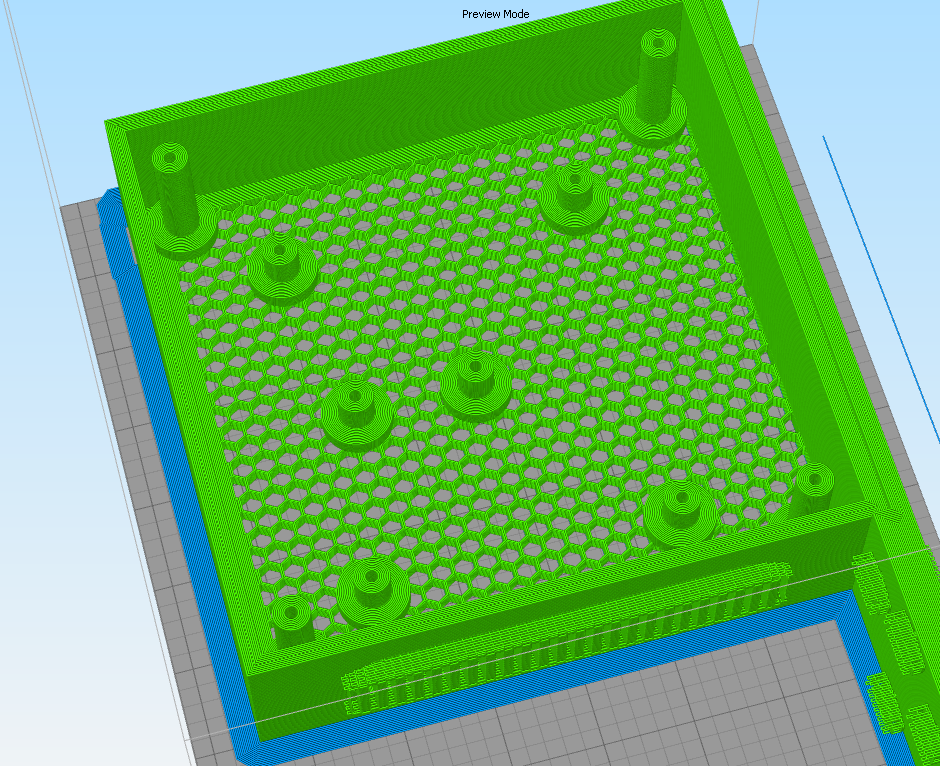
As you can see, it can still have standoffs for screwing down a PCB and for securing a lid.
-
Here's the finished unit:
What it does is completely eliminate the audible PWM noise from the fan on the Prusa I3 MK3. Now it can run practically silent.
-
@mfalkvidd Just a tip. You may be better of buying this one:
Much better spec and the price is the same. AND you can save tons of time as it does not require soldering.
-
@tbowmo Now I want to build one :-)))
-
@alexsh1 thanks for the tip. I guess I'll have a hard time getting my money and time back now that the kit is soldered, but it might be interesting for someone else.
-
I used this as a base for my own build: https://www.instructables.com/id/2-Player-Bartop-Arcade-Machine-Powered-by-Pi/
-
LED backlight for my CNC machine....
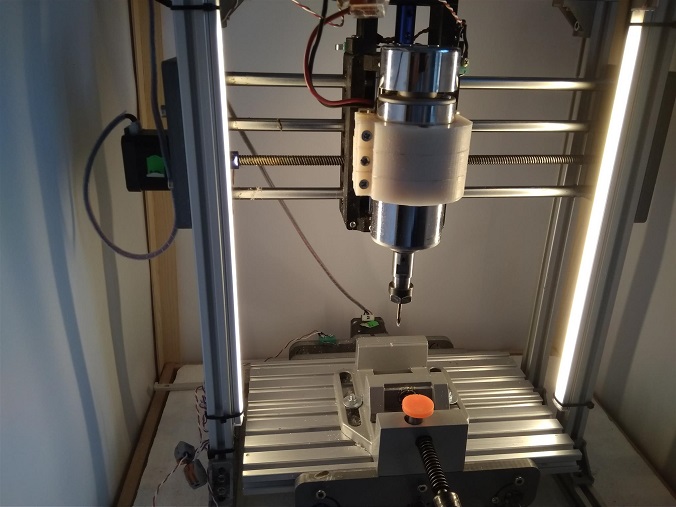
-
Today I've been trying to get a MS5803_05BA sensor working. This is a pressure sensor that is commonly used in dive computers.
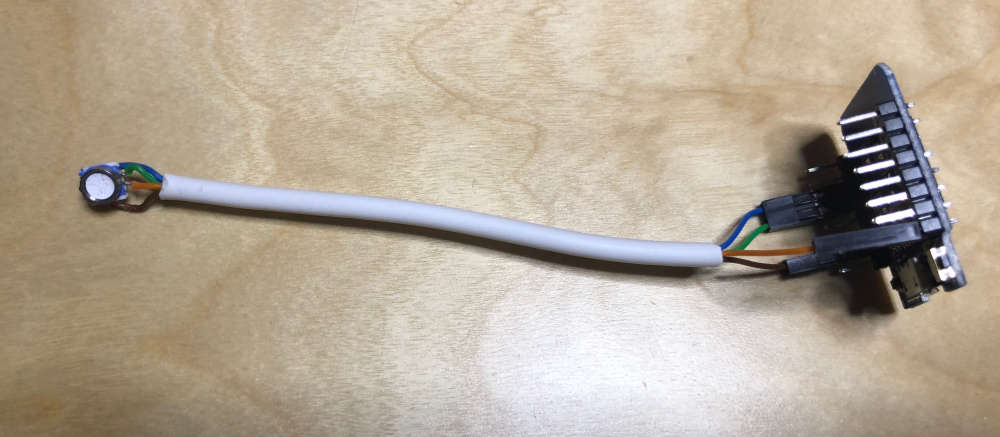
The sensor is tiny and handles 0-5 bar. So far I've not been able to communicate with it though. I use i2c and have tried two libraries, but none of them work (or maybe I killed the sensor when I soldered the cable).
-
At first I had a 25m cable. Turns out i2c isn't designed for that. It is designed for ~1m at 100kHz and ~10m at 10kHz. ESP8266 defaults to 400kHz and can't go lower than 50kHz without modifying the ESP8266 core files.
I got my first use case for the oscilloscope I built.
This was the signal at the start of the cable:

This was the signal at the end of the cable:
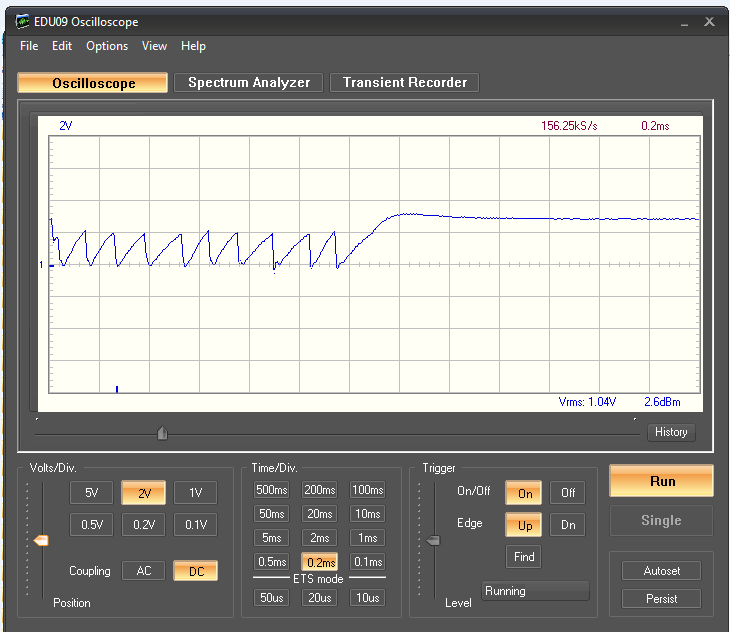
So no surprise that the communication didn't work.
I tried with a 2k pullup:
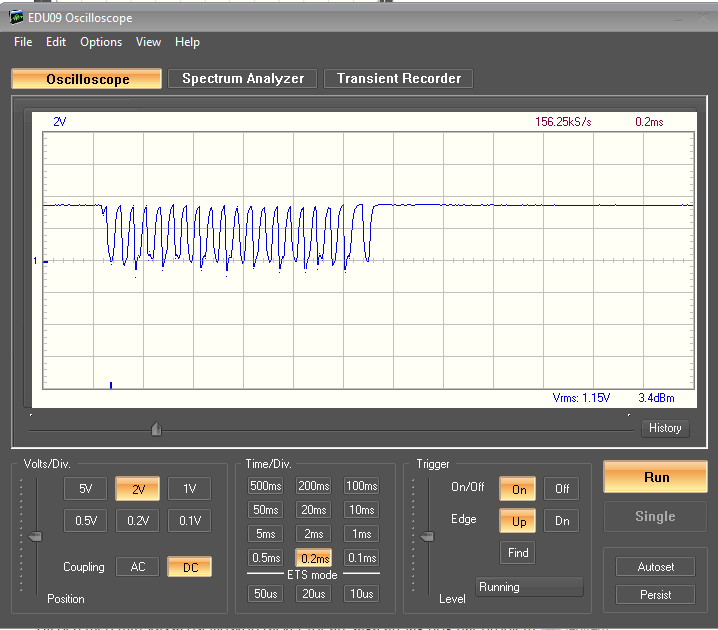
Much better! But still not very good.
I modified the library to use 7.5kHz:
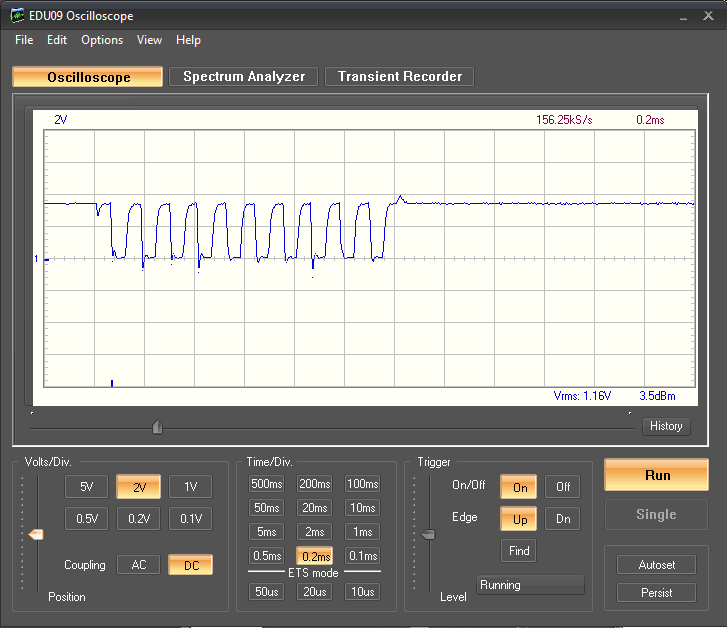
Better again, but still not great. I lowered the speed to 0.75kHz:
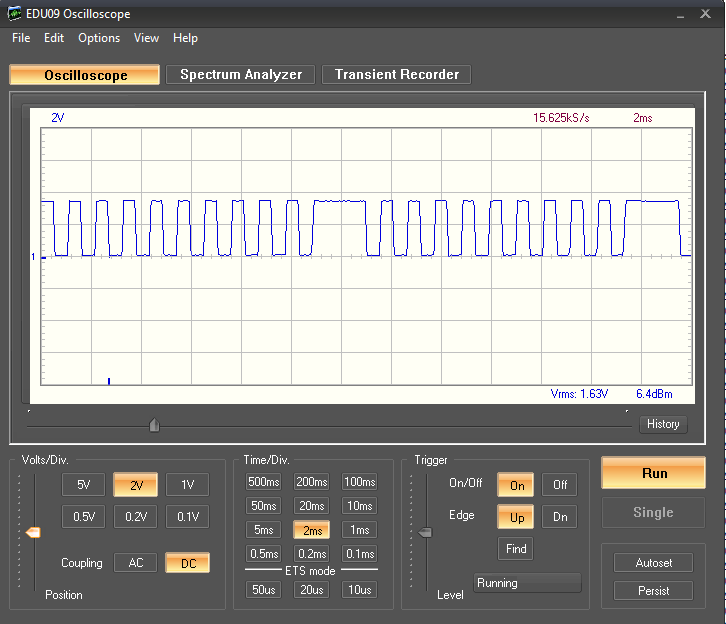
Nice and clean!
But communication still didn't work so I decided to cut the cable (to the 10cm length seen above) and restore all my changes. But communication still doesn't work.
I bought the sensor from a reputable distributor in UK so I don't think I got a faulty sensor. But I don't seem to get any life signs at all from it. I tried an i2c scan sketch and it found nothing.
-
@mfalkvidd shot in the dark ; do you pull the PS pin high to select i2c protocol?
-
@yveaux yes I do. I took the easy way: soldered the 3.3V wire to pads 5 and 6 at the same time.
And I have tried putting a 104 ceramic capacitor between 3V3 and GND right next to the sensor.
CSB is connected to GND.My next step is either to see if I can get SPI working (instead of i2c), or order a new sensor. But first sleep.
-
BT832 Thin Node prototype. Inspired by https://forum.mysensors.org/topic/2067/my-slim-2aa-battery-node and @neverdie nrf5 and am612 research. I noticed the BT832 is about the same width as a AA battery holder. I'm using one AA LiFePo4. This is my first sensor with nrf5, bme280, and am612. I also incorporated a jst-sh 6 pin connector for programming. It includes swd, power, and text. All sensors are working. It did not turn out to be very thin. Need to try some smaller PIR lenses and rearrange components for the next iteration.

-
Nice work! If you want to go thinner, you may have to use a coincell. Looks nice the way it is though.
-
I have assembled a few UPS ... now I am testing these hardware.
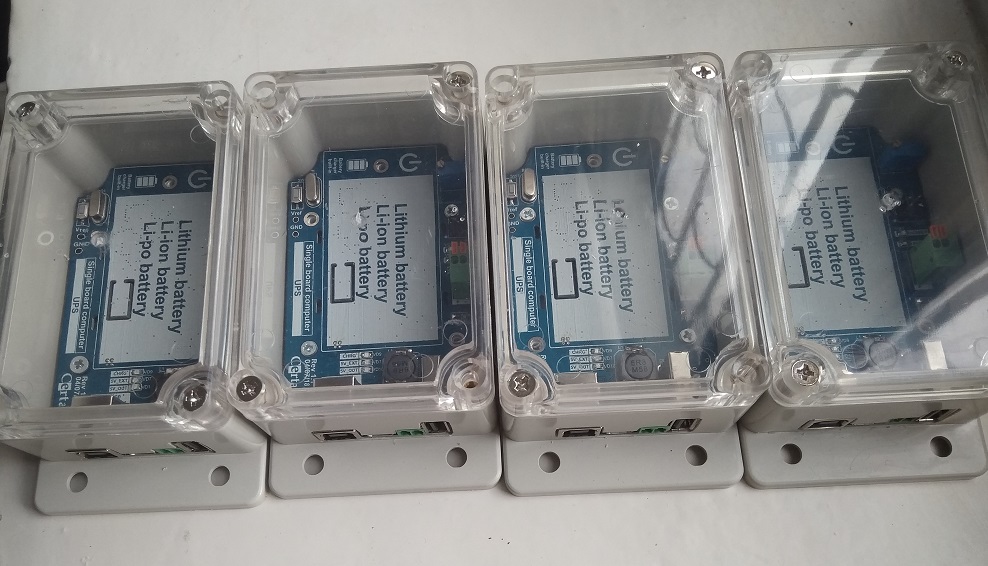
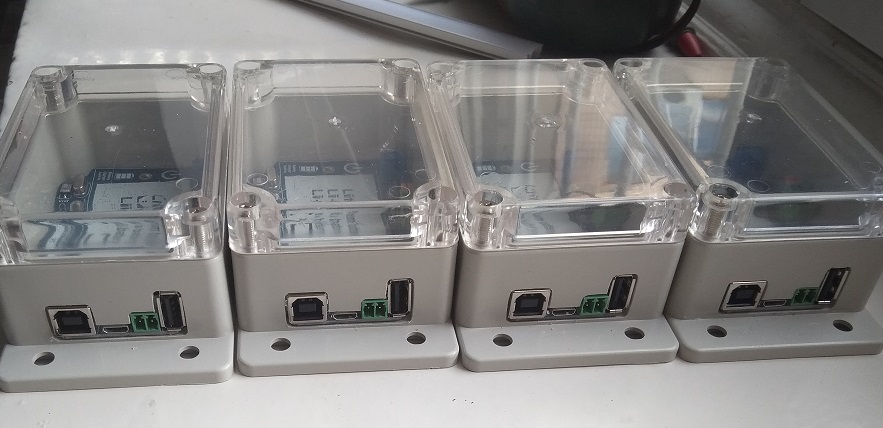
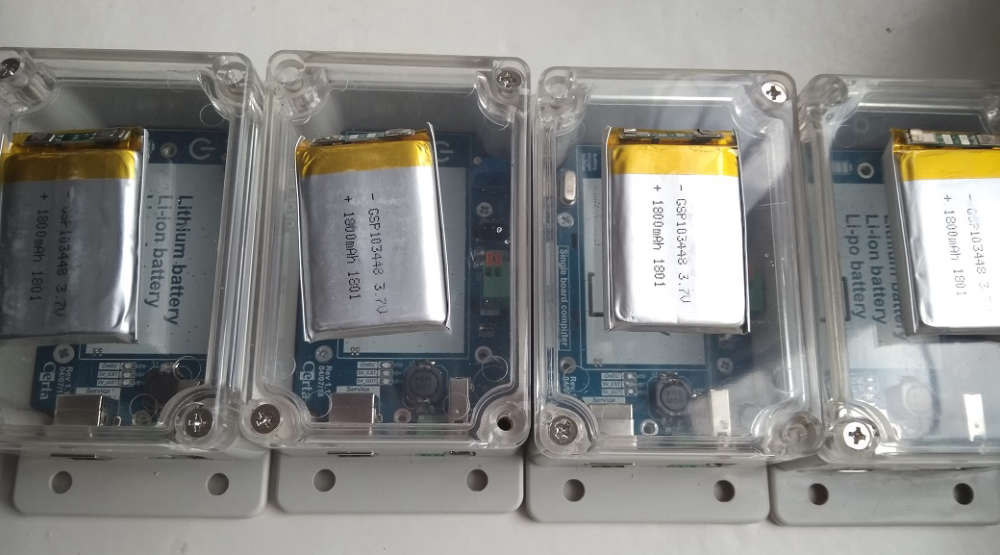
-
@kalina
Nice packaging. I'll be interested to hear how well they work.
-
@nagelc
OK, I will keep you informed of developments on this project ...
-
@kalina said in What did you build today (Pictures) ?:
I have assembled a few UPS ... now I am testing these hardware.
Looks neat! How did you do the cutout of the sides of these enclosures?
-
@tsjoender said in What did you build today (Pictures) ?:
Looks neat! How did you do the cutout of the sides of these enclosures?
No magic, this is the work of the CNC...)))
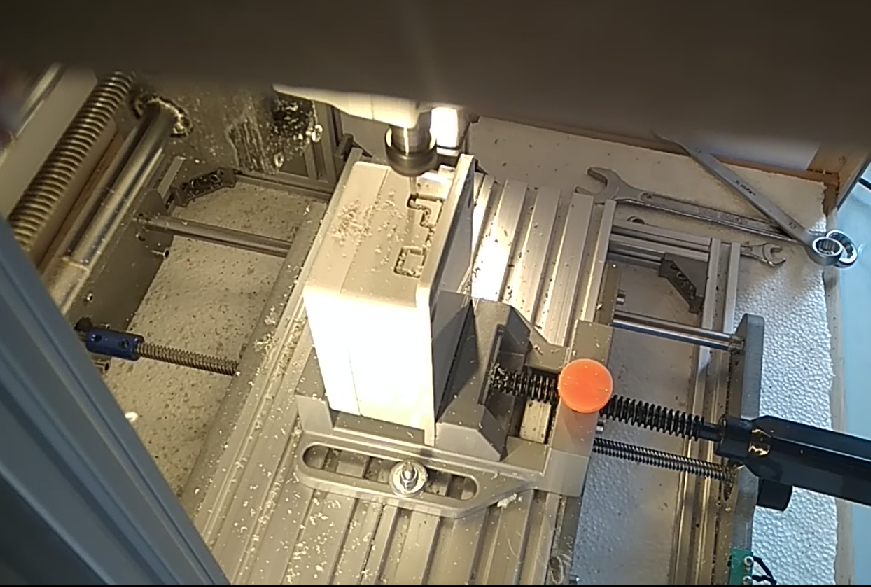
-
Today I had the ladder so I could get on the roof so while there I changed batteries on my rain node.
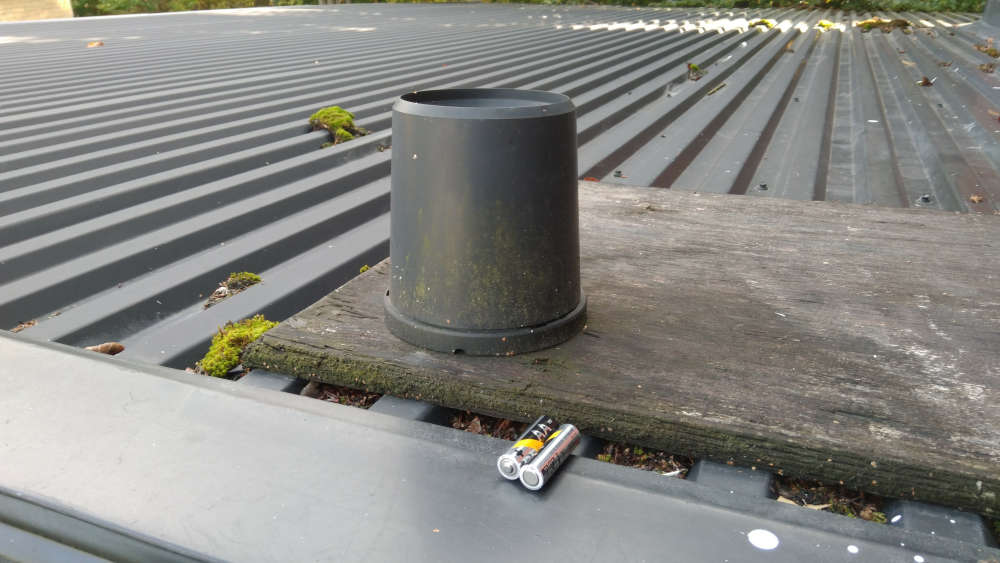
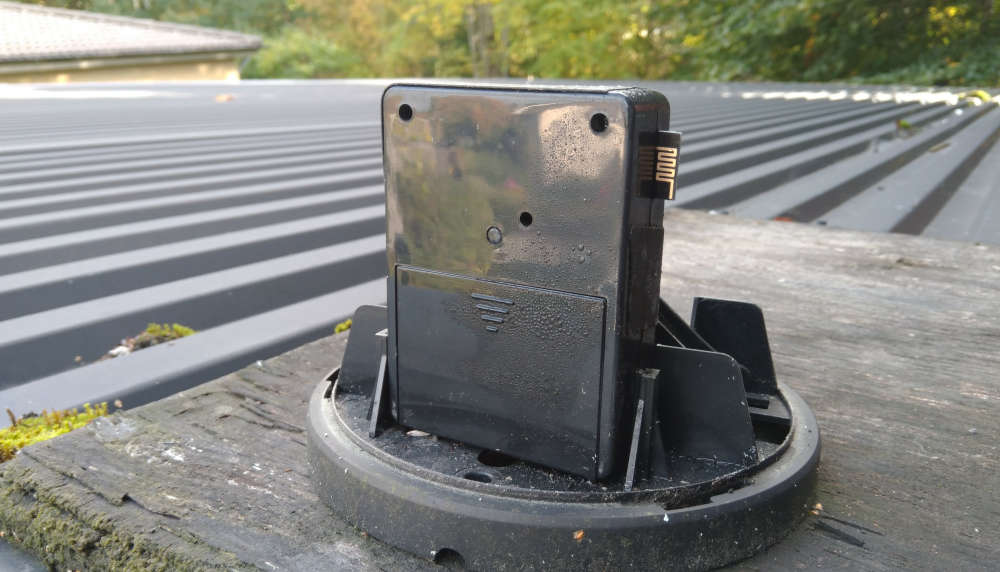
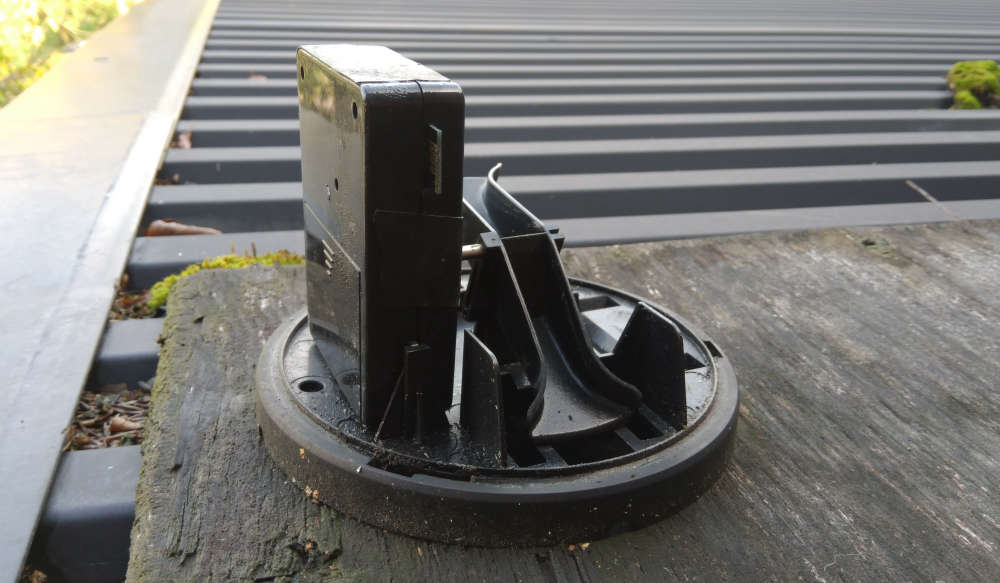
-
@sundberg84 But what did you build today?

-
@yveaux nothing that I can post here unfortunately... only a ladder for my cat
 non automated.
non automated.
-
It's a breakout for a Fanstel BT832 (NRF52832). Two experiments with this board, still a work in progress:
-
I wondered if it would be possible to hand solder to the LGA pads on the back of the BT832 using small plated thru holes (6 solder spots middle left in the first picture). Two pads connected. The rest did not. About what I expected.
-
Using just the microprocessor of the BT832 to make a LoRa node. (NRF5 radio turned off). So far the Ra-01 is not initializing. Edit (10/8). The RA-01 now initializes. I needed to update the pin assignments in MyBoardNRF5.h.
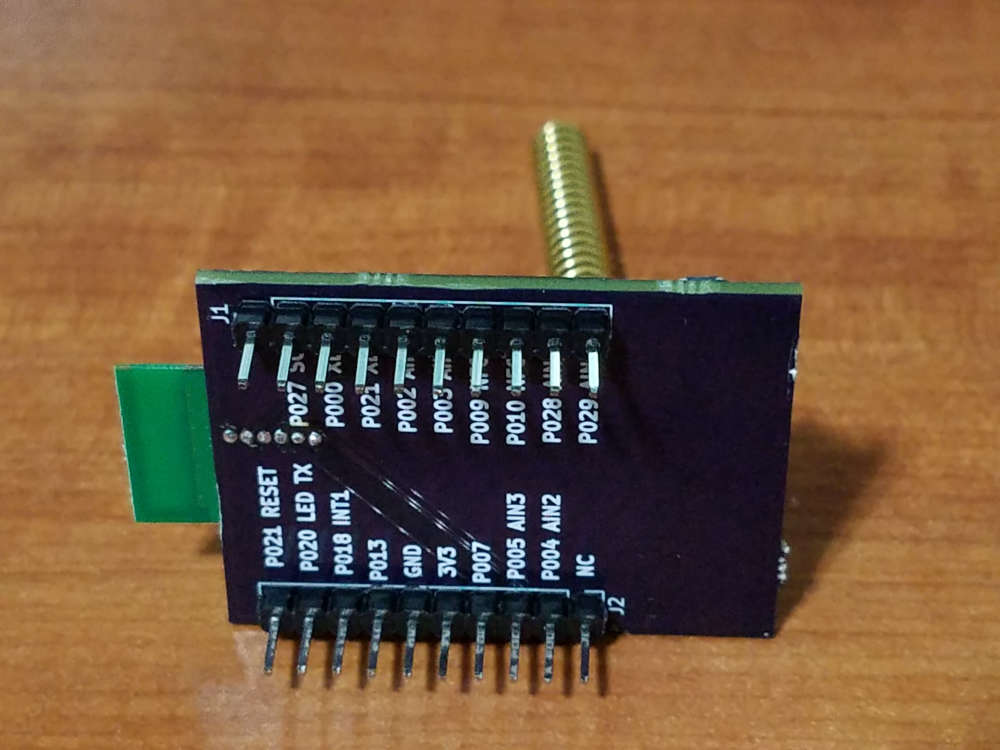
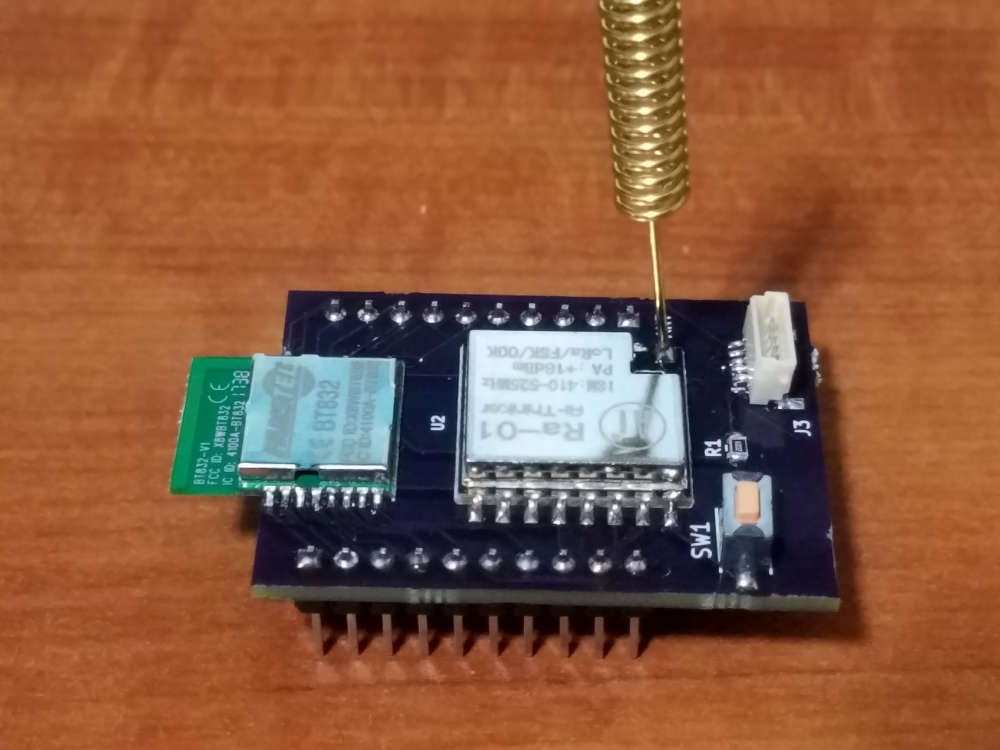
-
-
@sundberg84 said in What did you build today (Pictures) ?:
@yveaux nothing that I can post here unfortunately... only a ladder for my cat
 non automated.
non automated.Just pretend you have automated your cat. We can't control from here.
-
Colleagues!
I am writing in this thread, because here are the most active users of the forum and the system MySensors.
Perhaps you can help me with the solution of my problem: Improvement Xiaomi smart kettle (I need help!)
Maybe you had similar projects...
Then, I can finally publish a new project in this thread.
-
@vladimir please don't crosspost. Everybody is able to see the latest messages, so there is no need to point to your post from multiple threads.
-
@yveaux Excuse me. I promise not to do it again!

-
-
@sundberg84 said in What did you build today (Pictures) ?:
The rules are simple - keep it simple with one picture (or a few) with a small text including a small exp
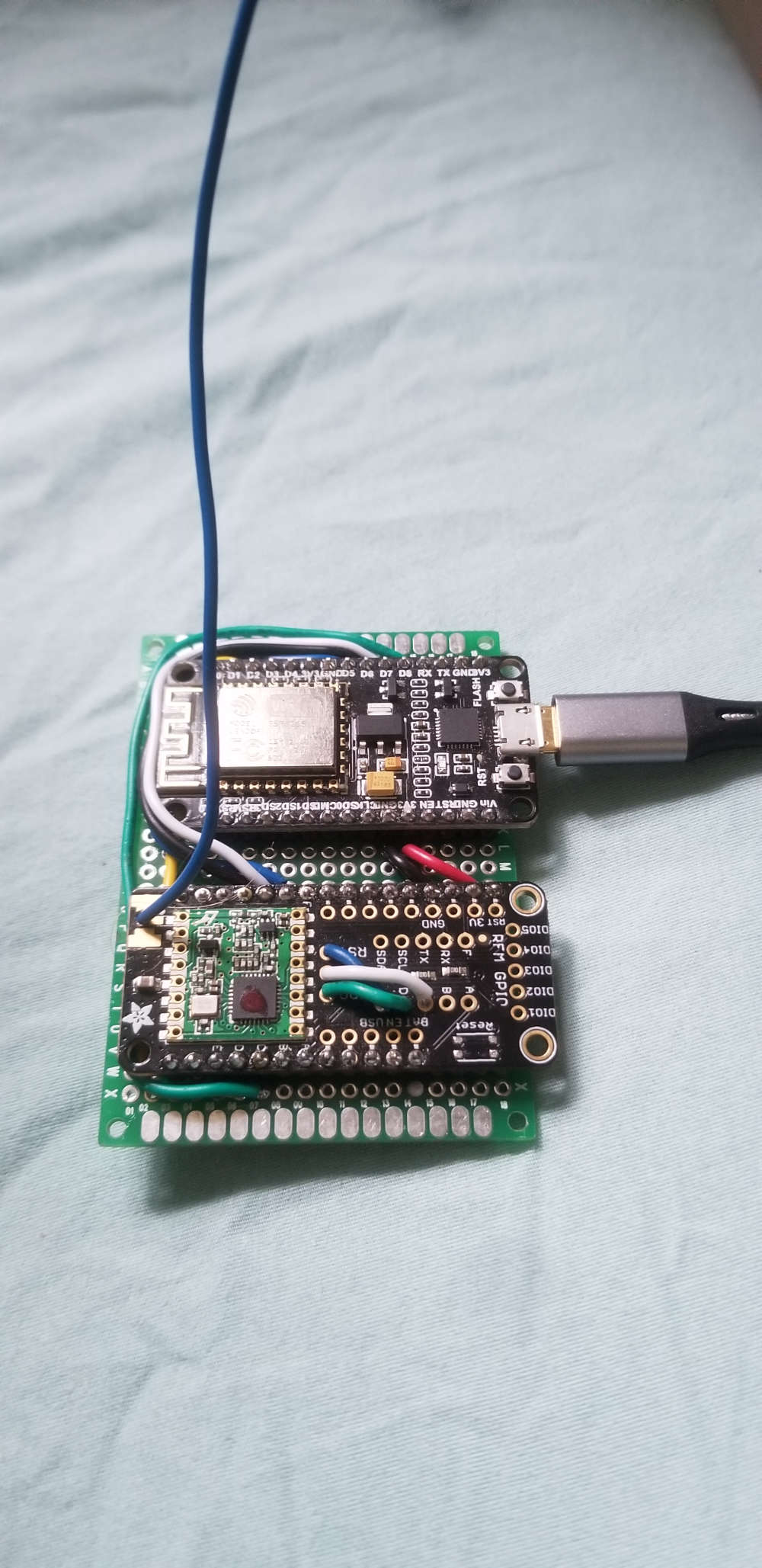
sick of breadboard so made the gateway more permanent. added a nice dc plug to it after pic
-
Playing with how small I could create a EasyPCB if I only used SMD components and footprints for both RFM69 and Nrf24l01+... including MysX, Signing, Flash offcourse... and a coincell...
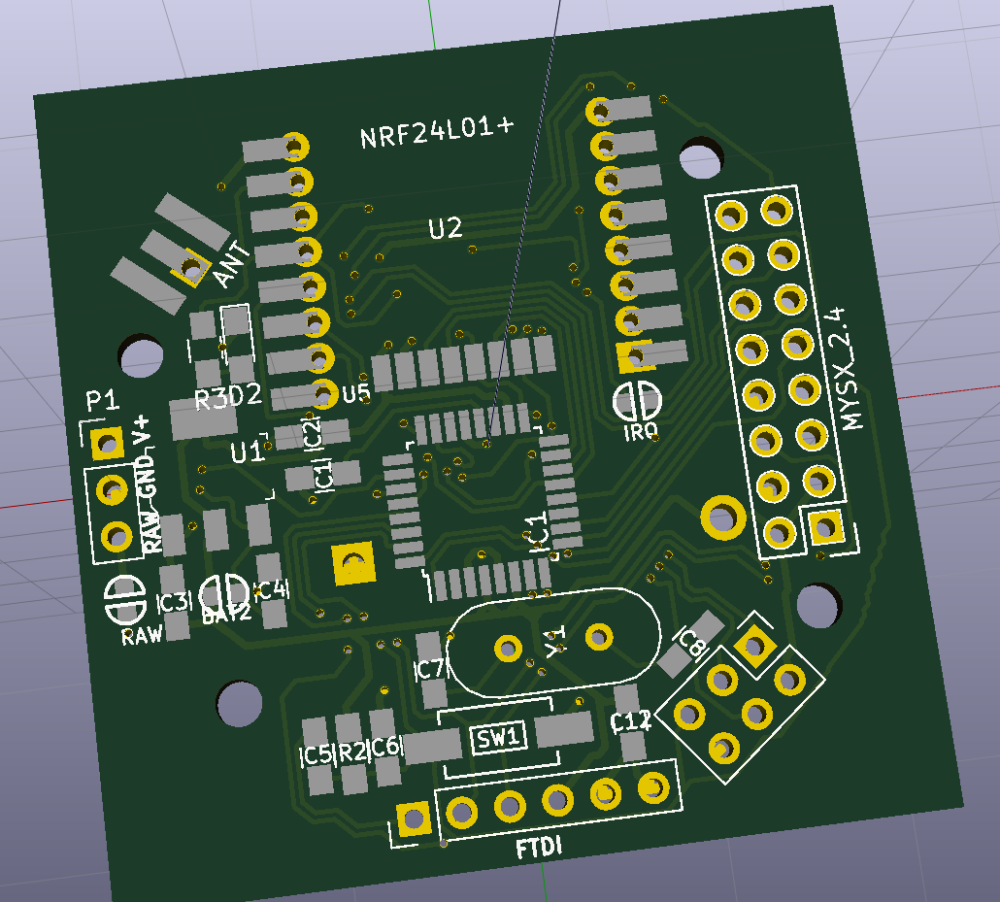
-
cool, what dimensions are you down to now?
btw. what happened to the trace in lower right corner (the one that runs by the ISP connector)?
-
@tbowmo - Thanks!!
 42mm diameter (round, but the 3d view doesnt show that).
42mm diameter (round, but the 3d view doesnt show that).
The track - well, it seems like I can only get KiCad to make 45dgr tracks... need to investigate it its possible to make other tracks...
-
@sundberg84 you can also use smd crystal. They are cheaply available on aliexpress. Are you using 0603 caps and resistors?
-
@monte - 0805 res/caps, (for me easy to solder, while 0603 is possible but start to get hard).
I was thinking about SMD crystal but left it since i couldnt find a common size. Do you know a good size for SMD crystal (with multiple brands?) like 0805 or a good searchword? I found HC-49S but they are the same size as the ones with pins.
-
@sundberg84 "well, it seems like I can only get KiCad to make 45dgr tracks"
References => General Settings => Limit graphics lines to 45 degrees
-
I recently hacked my Assa Abloy/Yale smart lock as it could only turn +-90° created a new washer ring, so it now can turn infinitely so it is usable to use a lock
The needed 3D stl file or Freecad drawing is to be found here:
https://www.thingiverse.com/thing:3155286
-
What an inspiring thread!
-
@sundberg84 I've bought these 5032 crystals: https://www.aliexpress.com/item/Free-shipping-20pcs-16-000MHZ-16mhz-20pF-2Pin-5032-smd-quartz-resonator-Crystal/32821974003.html but there are plentiful other offers on aliexspress and/or ebay. This 5032 package seems to be the most common. There is another package with the same size but with 4 pins 2 of which are not connected, I bought them from my local distributor, while was waiting a package from aliexpress. But those with 4 pins are harder to solder (obviously) and I don't see any pros of using them.
The most suitable for hand soldering and easiest to find are these: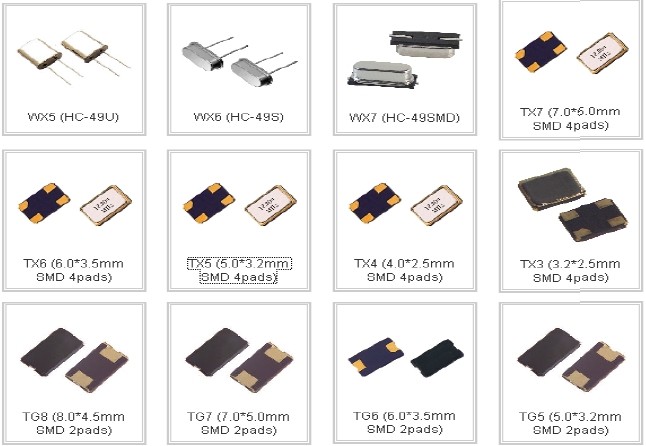
According to this image the ones I have are TX5 and TG5.
-
Im getting so tired of soldering extra wires and stuff so today im doing a "MysX to All common sensors breakout board"...
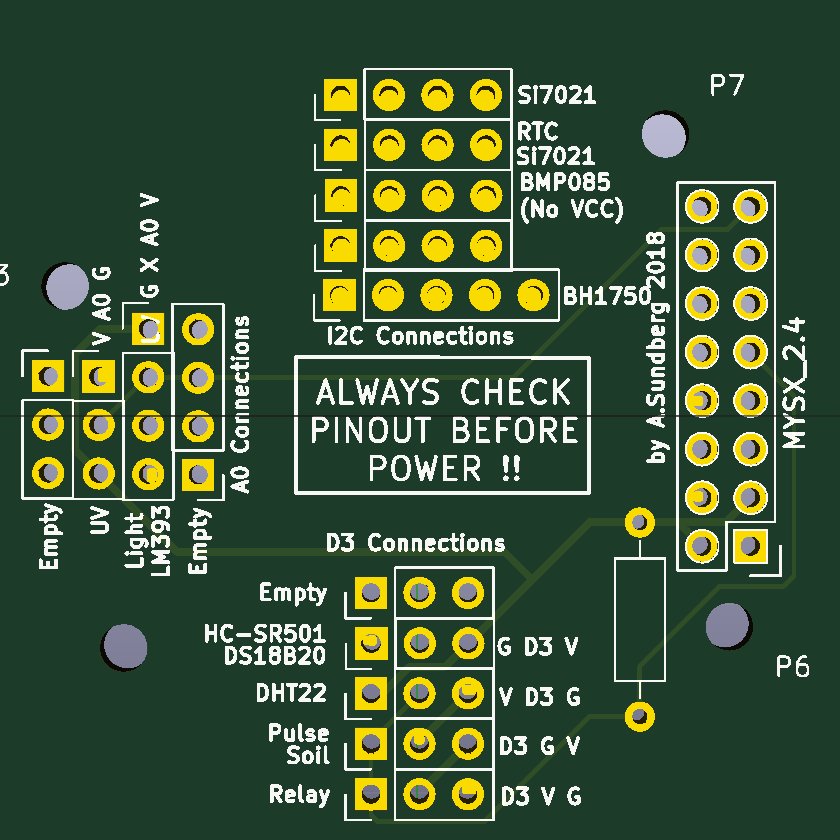
Dont know if this will work... but worth a shot.
-
@sundberg84 If I'm honest some of those sensors seem 'old' to me.
- I usually go for the BEM280 instead of the BMP085 and DHT22. It's so cheap now.
- I never use pulse soil sensors, only the capacitive kind, as they last much longer and don't pollute the soil.
In fact, I always make all my sensors with the Nano Wireless Expansion Board, which is about $2. You can simply plug in the NRF24 into it.
https://www.aliexpress.com/item/Free-shipping-Nano-328P-IO-wireless-sensor-expansion-board-for-XBEE-and-NRF24L01-Socket-for-arduino/32264665470.html
-
@alowhum thanks for the reply!
I used the sensor in MySensors build section, i somehow believe that is whats used the most. But that does not stop me from adding your suggestion for BEM280. That Wireless board looks great, but Im working with the MysX connector so thats why im making this board.
-
@alowhum said in What did you build today (Pictures) ?:
- I usually go for the BEM280 instead of the BMP085 and DHT22. It's so cheap now.
Unfortunately most of the cheap breakout boards found on AliExpress use clones with much worse specs than the original version
In fact, I always make all my sensors with the Nano Wireless Expansion Board, which is about $2. You can simply plug in the NRF24 into it.
https://www.aliexpress.com/item/Free-shipping-Nano-328P-IO-wireless-sensor-expansion-board-for-XBEE-and-NRF24L01-Socket-for-arduino/32264665470.htmlBut you can't really make battery-powered sensors with those ? The regulators are AMS1117 with 5mA typical quiescent current.
-
@nca78 said in What did you build today (Pictures) ?:
Unfortunately most of the cheap breakout boards found on AliExpress use clones with much worse specs than the original version
Could you be more specific? How exactly worth specs does they have. Was going to buy a bunch of them. Maybe there is some comparison or tests?
-
@sundberg84 yes, sorry about that, I realised too late that it's an expansion board.
@Nca78 Thanks! That 5ma leak current was exactly the kind of info I needed about the board. I was wondering it if could be useful for battery powered things. None of my sensors are. Well, one - I used the BBC Micro:bit as a battery powered motion sensor.
I guess not having a regulator on board is what makes the Arduino Pro Micro so good at being battery powered.
Out of curiosity: if I attached the board to a Usb powerbank (say 10.000 Mah) to operate as an electricity led pulse sensor.. what would be an estimate for how long it would run?
-
@alowhum rough calculation: 10,000/5 = 2,000h = 83 days. Lower if other componens also consume power.
-
@monte clones use different components, so it depends on which clone.
-
@alowhum said in What did you build today (Pictures) ?:
I guess not having a regulator on board is what makes the Arduino Pro Micro so good at being battery powered.
actually the better solution is the pro mini at 3.3v with regulator and led removed, and you can use an LDO regulator to power it with a LiPo cell or no regulator at all if you use a LiFePO4 battery. Using the arduino at 3.3v allows you to use all radio modules and all the low power sensors.
-
This is my new PSU - 3D printed enclosure and a few components
It is very precise.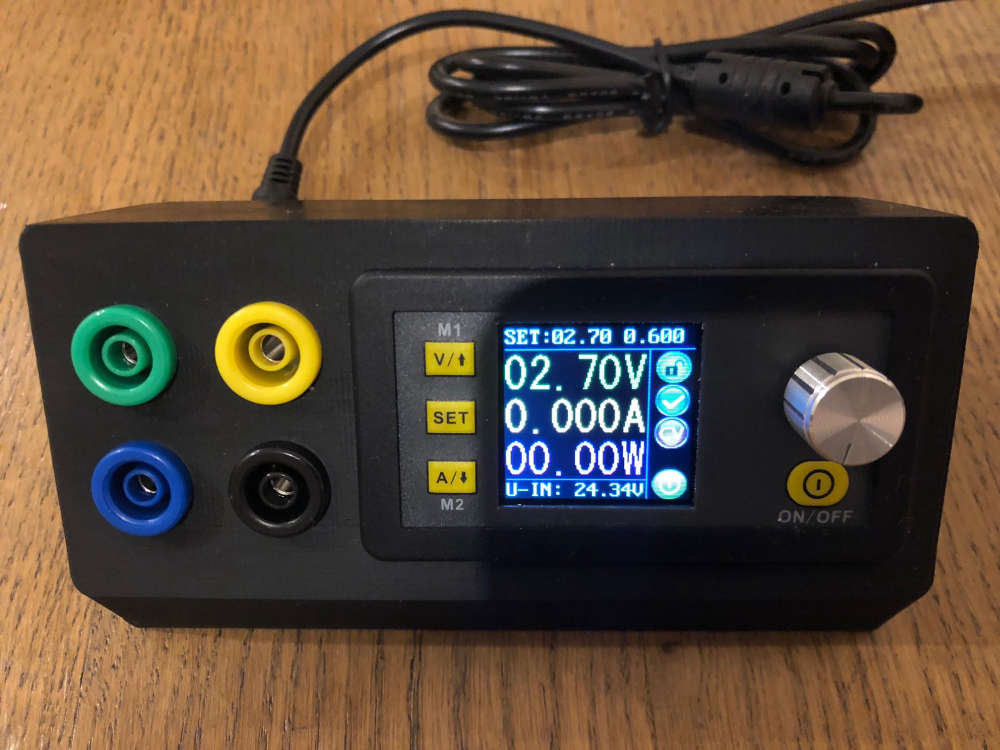
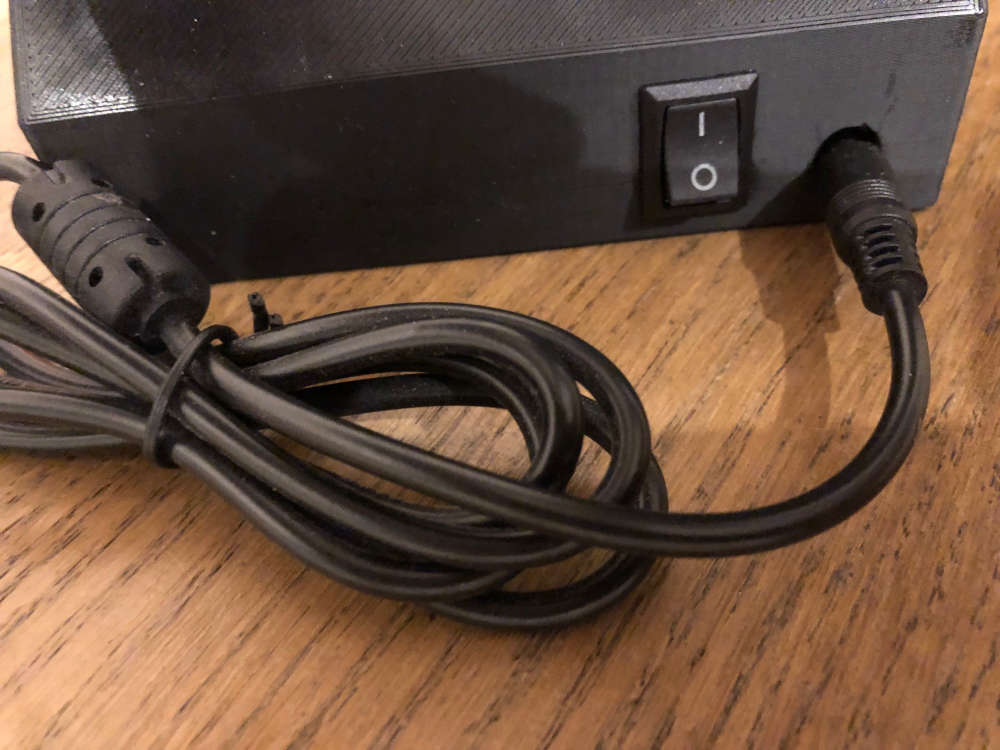
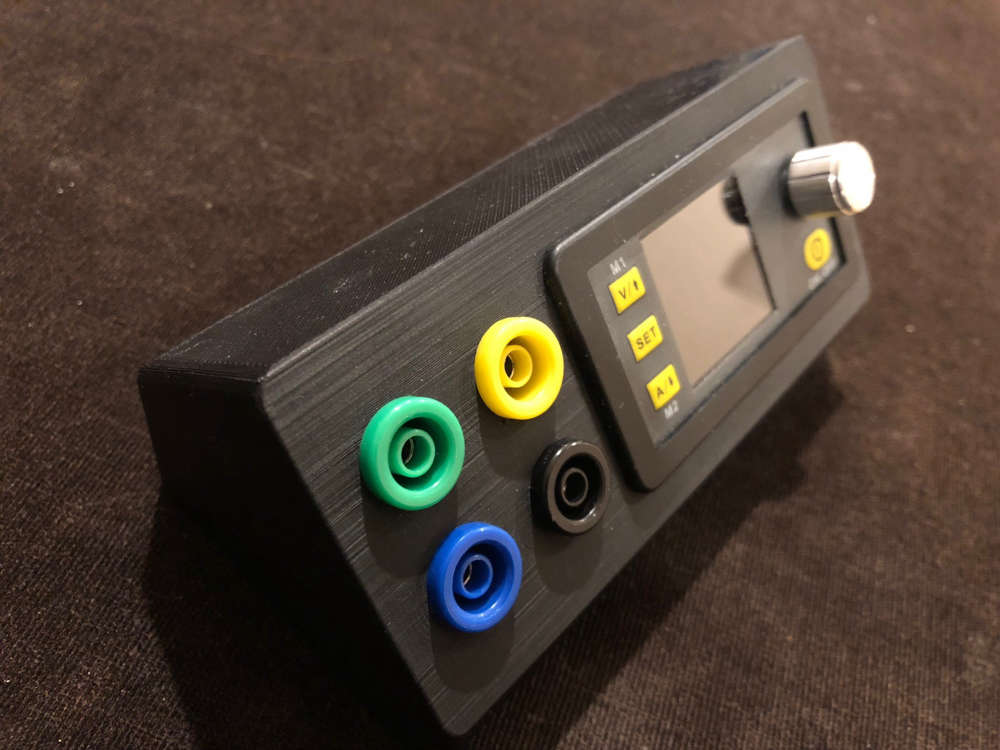
-
@alexsh1 nice! Why do you have 4 banana sockets and what's the color coding?
-
@alexsh1 Looks awesome
-
Something nice about those power supplies is that for very little extra money (maybe $1-3 extra) you can buy versions with UART and/or even bluetooth data output that you can send to a logger. I'd have to check, but it might even be controllable that way also.
-
Yes, in fact I bought the DPS5015 with its metal box and BT/USB interface and I can control it from the computer. Data logging of course is limited to the values on the screen
-
@yveaux This is simple. The Aliexpress seller sent me these instead of black and red ones. So I have been creative - black and blue is negative and yellow and green is positive. Did not bothered waiting for a few weeks for replacement.
-
@neverdie It is purely for logging and control. I did not require either so did not order it. If you add all extras, it does become considerably more expensive.
-
@alexsh1 very nice! Is the 3d-drawing online to be downloaded? I think I want one as well.
-
Saw that all other kids cool kids have one, so I installed one kitchen-pc as well.
It is Flytech K757 15'' POS terminal, windows 10 pro, touch screen, 300gb (soon to be ssd) 8gb ram dual core 2,2ghz. Purchased from local "ebay" for around 140 eur.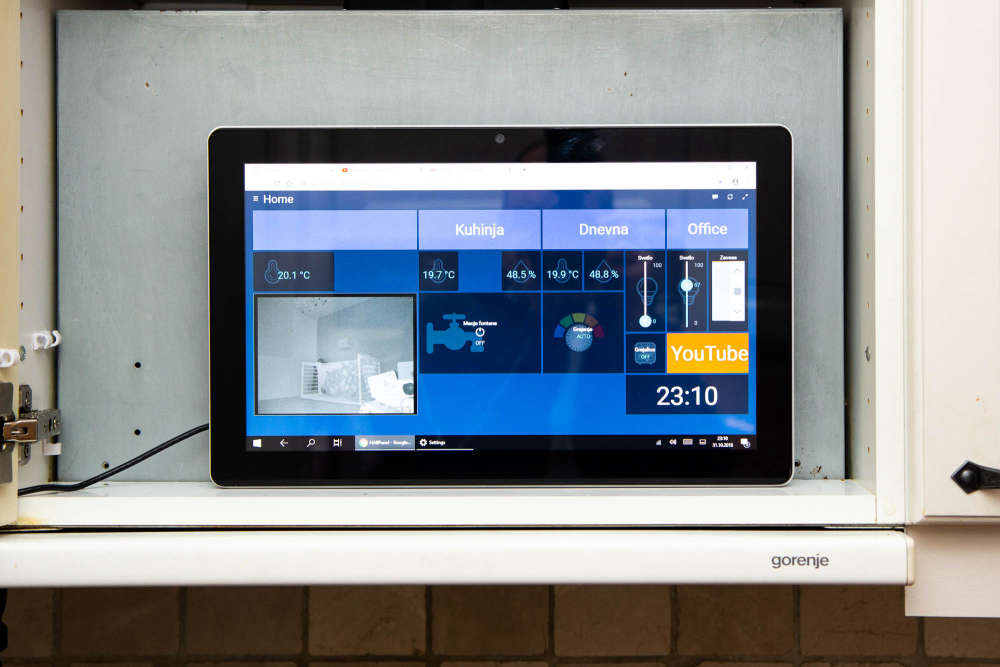
Now I can make that awesome dinner, once in a full moon, without having to carry and unlock my phone all the time...
-
esp8266 based thermostat for heating system
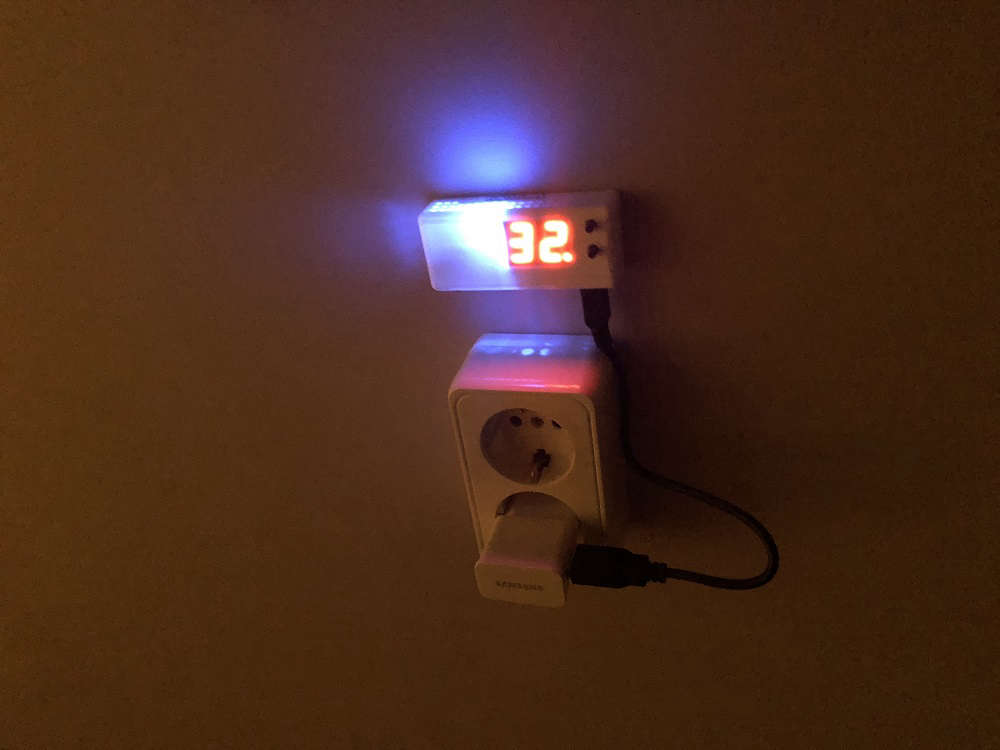
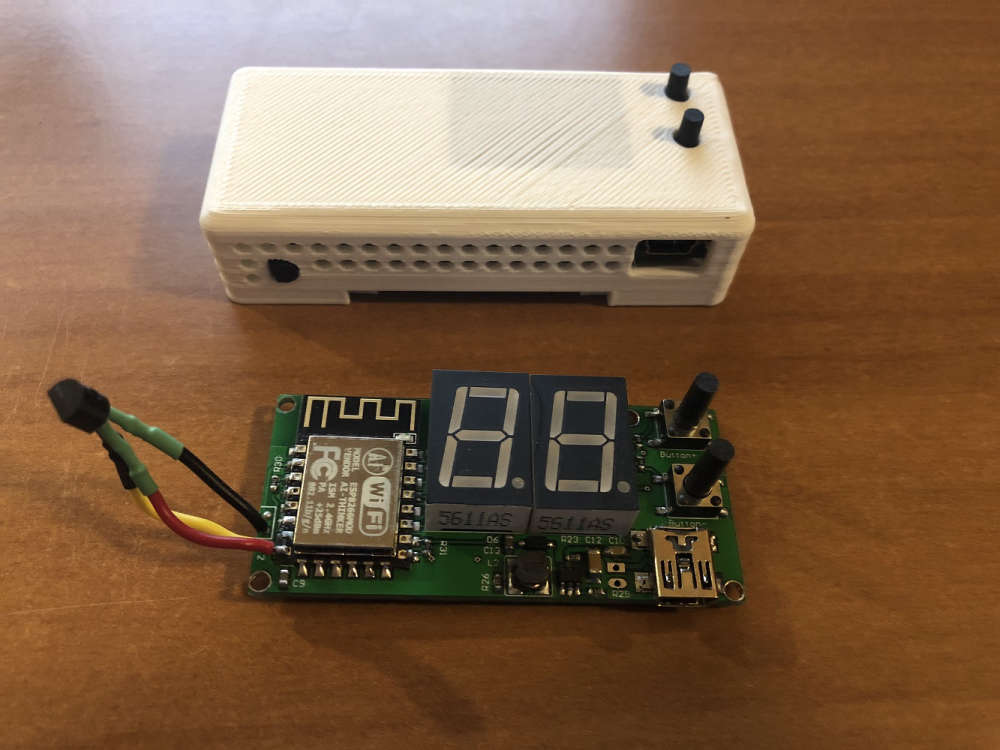
-
bridge from single wire (my w3p manchester based) to UART. will be used to bridge single wire network with Ethernet throuth ESP8266 or STM32 + Wiznet
second photo - development stand with w3p bus
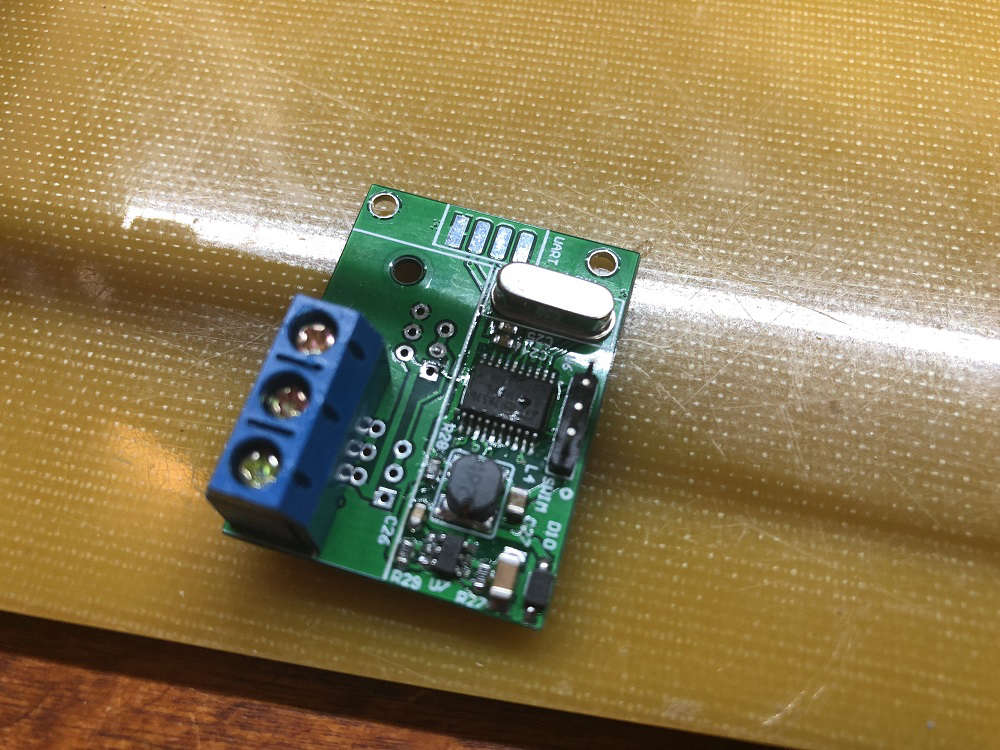
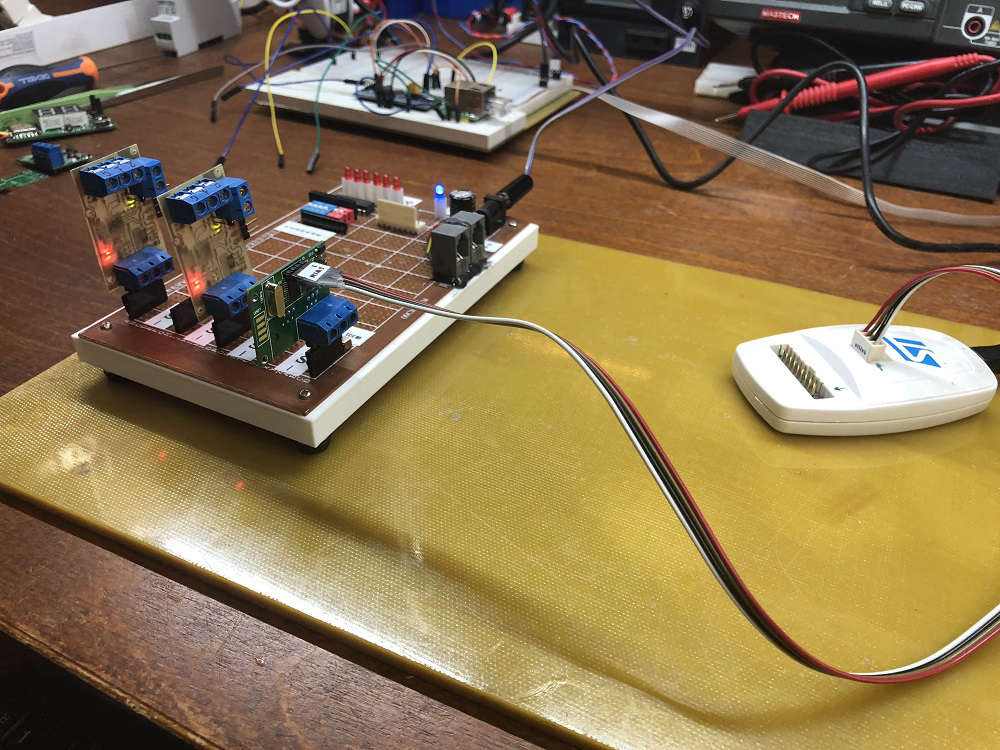
-
Yes, you can downloads STLs from here: https://www.thingiverse.com/thing:2250644
There another one https://www.thingiverse.com/thing:1816188
-
Build myself a simple temperature sensor with a clock. No RTC, just pulling time from controller and updating every 10 minutes to avoid drift. Also requesting outdoor temperature from controller. Build from what was lying around - DHT22, pro mini clone, nokia screen. I can share the code if someone needs it

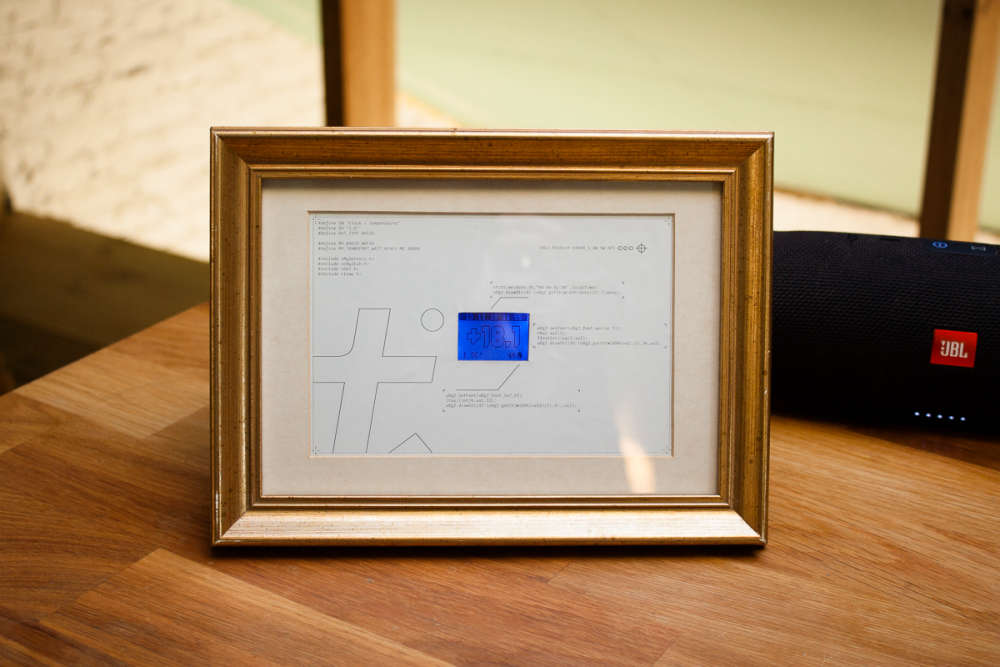
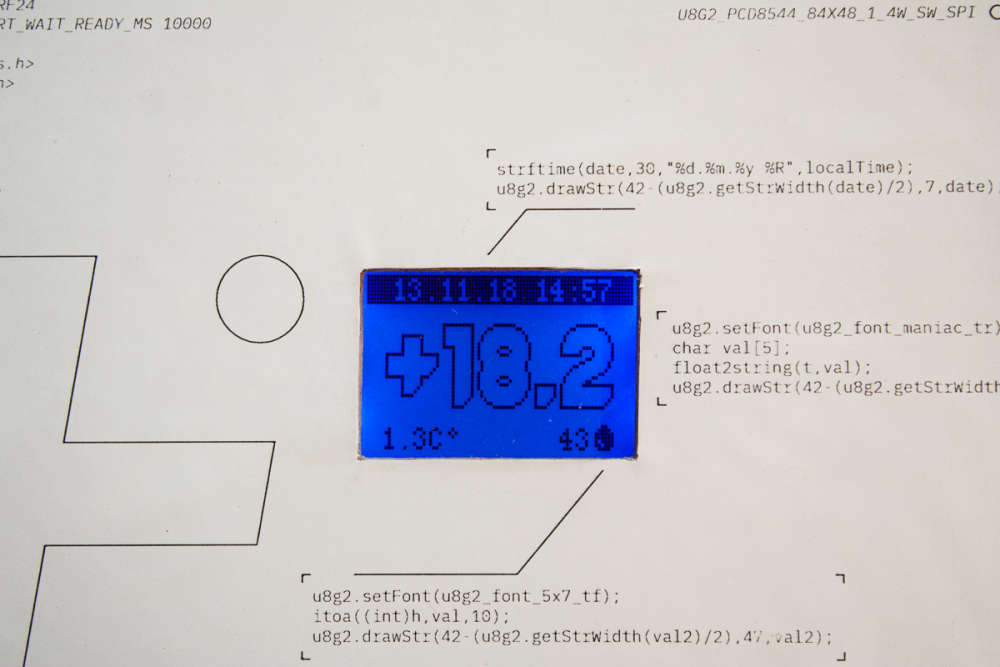
-
@monte if you can share, pls do so

-
Ask questions if something is left unclear.
#define DHT_PIN 4 #define CE_DISPLAY 5 #define RST_DISPLAY A2 #define DC_DISPLAY A3 #define DIN_DISPLAY 7 #define CLK_DISPLAY 8 #define SN "Clock + Temperature" #define SV "1.0" #define DHT_TYPE DHT22 #define MY_RADIO_NRF24 #define MY_TRANSPORT_WAIT_READY_MS 10000 #include <MySensors.h> #include <U8g2lib.h> #include <DHT.h> #include <time.h> volatile unsigned long rawTime; unsigned long timer1 = 0; unsigned long getTimeDelay = 600000; unsigned long timer2 = 0; int getDHTDelay = 3000; unsigned long timer3 = 0; unsigned int sendDelay = 60000; float h, t; char outdoorTemp[50]; float lastT; U8G2_PCD8544_84X48_1_4W_SW_SPI u8g2(U8G2_R0, /* clock=*/ CLK_DISPLAY, /* data=*/ DIN_DISPLAY, /* cs=*/ CE_DISPLAY, /* dc=*/ DC_DISPLAY, /* reset=*/ RST_DISPLAY); // Nokia 5110 Display DHT dht(DHT_PIN, DHT_TYPE); MyMessage tempMsg(0, V_TEMP); volatile struct tm * localTime; void before() { u8g2.begin(); Serial.begin(115200); u8g2.firstPage(); do { initScreen(); } while ( u8g2.nextPage() ); dht.begin(); delay(2000); } void setup() { setupTime(); timer1 = millis(); t = dht.readTemperature(); h = dht.readHumidity(); timer2 = millis(); send(tempMsg.set(t, 0)); lastT = t; timer3 = millis(); } void presentation() { present(0, S_TEMP); present(1, S_INFO); //Info sensor to request outdoor tempereture sendSketchInfo(SN, SV); request(1, V_TEXT); } void setupTime() //setting up timer and interrupt for seconds counter { cli(); //set timer1 interrupt at 1Hz TCCR1A = 0;// set entire TCCR1A register to 0 TCCR1B = 0;// same for TCCR1B TCNT1 = 0;//initialize counter value to 0 // set compare match register for 1hz increments OCR1A = 15624;// = (16*10^6) / (1*1024) - 1 (must be <65536) // turn on CTC mode TCCR1B |= (1 << WGM12); // Set CS10 and CS12 bits for 1024 prescaler TCCR1B |= (1 << CS12) | (1 << CS10); // enable timer compare interrupt TIMSK1 |= (1 << OCIE1A); sei(); requestTime(); } ISR(TIMER1_COMPA_vect) { rawTime++; //increment seconds counter } void float2string(float n, char* output) { char aChar[5]; char bChar[4]; if (n > 0.0) { strcpy(aChar, "+"); } else if (n < 0.0) { strcpy(aChar, "-"); } dtostrf(n, 4, 1, bChar); sprintf(output, "%s%s", aChar, bChar); } void initScreen() //function to show message on screen during node start { u8g2.setFont(u8g2_font_profont12_tr); u8g2.drawStr(42 - (u8g2.getStrWidth("Connecting to") / 2), 13, "Connecting to"); u8g2.drawStr(42 - (u8g2.getStrWidth("a MySensors") / 2), 26, "a MySensors"); u8g2.drawStr(42 - (u8g2.getStrWidth("network.") / 2), 39, "network"); } void mainScreen() { u8g2.setDrawColor(1); u8g2.setFontMode(1); u8g2.drawBox(0, 0, 84, 8); u8g2.setDrawColor(0); u8g2.setFont(u8g2_font_profont10_tf); localTime = localtime(&rawTime); //using standart AVR time.h library to convert seconds counter into local time char date[30]; strftime(date, 30, "%d.%m.%y %R", localTime); //constructing a string with date and time u8g2.drawStr(42 - (u8g2.getStrWidth(date) / 2), 7, date); u8g2.setDrawColor(1); u8g2.setFont(u8g2_font_maniac_tr); char val[5]; float2string(t, val); //converting float value from dht11 to a string u8g2.drawStr(42 - (u8g2.getStrWidth(val) / 2), 36, val); u8g2.setFont(u8g2_font_profont10_tf); u8g2.drawStr(5, 47, outdoorTemp); itoa((int)h, val, 10); //I don't need precision for humidity procentage, otherwise you can use dtostrf() u8g2.drawStr(70 - u8g2.getStrWidth(val), 47, val); u8g2.setFont(u8g2_font_open_iconic_thing_1x_t); u8g2.drawStr(71, 47, "\x48"); } boolean isTime(unsigned long *timeMark, unsigned long timeInterval) //time counter function for non-blocking delays { if (millis() - *timeMark >= timeInterval) { *timeMark = millis(); return true; } return false; } void loop() { if (isTime(&timer1, getTimeDelay)) { //request time from controller once in 10 minutes requestTime(); } if (isTime(&timer2, getDHTDelay)) { //polling DHT sensor and printing values to serial t = dht.readTemperature(); h = dht.readHumidity(); Serial.print("Temperature: "); Serial.print(t); Serial.println("°"); Serial.print("Humidity: "); Serial.print(h); Serial.println("%"); } if (isTime(&timer3, sendDelay)) { //sending temperature to controller once in 30 seconds if (t != lastT) { send(tempMsg.set(t, 0)); request(1, V_TEXT); lastT = t; } } u8g2.firstPage(); //this section is for screen handling do { mainScreen(); } while ( u8g2.nextPage() ); } void receive(const MyMessage &message) //receiving an outdoor reading from the controller and constructing a string to display { if (message.type == V_TEXT) { sprintf(outdoorTemp, "%sC%s", message.getString(), "\xb0"); } } void receiveTime(uint32_t ts) { rawTime = ts - UNIX_OFFSET; //substructing an offset from received timestamp, since time.h doesn't use Unix count localTime = localtime(&rawTime); //updating seconds timer with accurate value timer1 = millis(); }
-
I repurposed a breakout board to make an informal range test of an RA-01 (433 Mhz).
The test was not very sophisticated -- I had MySensors node request time from the controller and blink a LED when it received the time. Then I just walked around my neighborhood.
Lost the signal at ~ 156 Meters. This was down hill and through several houses.
Picked up again at ~ 248 Meters. This was at about the same elevation as my house but still through several houses.
It also works well in the far corner of my basement (2 floors and 1 or 2 walls). The NRF24 has trouble there, but RFM69 does not.
The range may not seem very impressive for a LoRa radio (I hoped for kilometers : ) , but the antennas are not optimized and this is a fairly dense suburban area -- difficult to get line of site. They certainly work well enough for any application I have in mind.
-
@nagelc If you add some coding gain, you should be able to get longer range. However, tx time will increase.
-
Thks. I'll try that.
-
Not so much a MySensors build as an example of how even the most basic information can inform changes for the better, in this case space heating.
The system here is fairly basic, an array of DS18B20s, some ultrasonic tank probes and a gas reed sensor, temperature is updated every 5 minutes, the gas updates every 0.05m3...
With winters here down to -20, the first priority last year was insulation, and even though a modern house, the gas bills essentially halved over the year, effectively funding not only the insulation, but replacement axial radiator valves and thermostat heads (Heimeier) to replace the typical arrangement of unknown origin, with spare... But now the MySensors impact..
This autumn's attention turned to the central heating unit, a modern combi unit of good manufacture, installed by a 'certified' heating engineer, but aside what little I knew about condensation boilers and the steep learning curve that followed, I was bemused by the return from the radiator loop almost burning my finger within 10 minutes of the system being fired up. This did not make sense for what I understood of a condensing boilers, which compelled a look inside for the first time, the manual and some googling.The boiler is a 25kW combi with minimum output 7.6kW, the radiators account for ca 13kW at Delta 60 set for 15c drop (previously set ca 20c drop), settings since day one were 65c and the pump was set at max output of 3, last year's -20 resulted in 13.5m3/day gas consumed, not crazy by historical records, but hmmm.
So now comes tinkering with data from MySensors via Domoticz to inform...
Currently the boiler is set at 55c, the pump is on Low (40 v 84w), but the results are surprising - Slower rising temperature when ON, 42 minutes v 25, but gas use dropped from 0.75 to 0.6m3, but here's the kicker from that longer heating time, not only less energy used per cycle, but longer and thereby fewer cycles per day. Current evaluations are between 15 and 20% savings, so thank you to all the MySensors community and contributors..
-
I have build a very quick board with Dual relay channel, arduino nano, NRF24 transceiver, Power supply from 220V.
There is also "Fil Pilote" connection to pilot the electrical heater. It is a french protocol.
It is a "dirty" board for sure but usefull when i want to test some code implemented in the arduino Nano.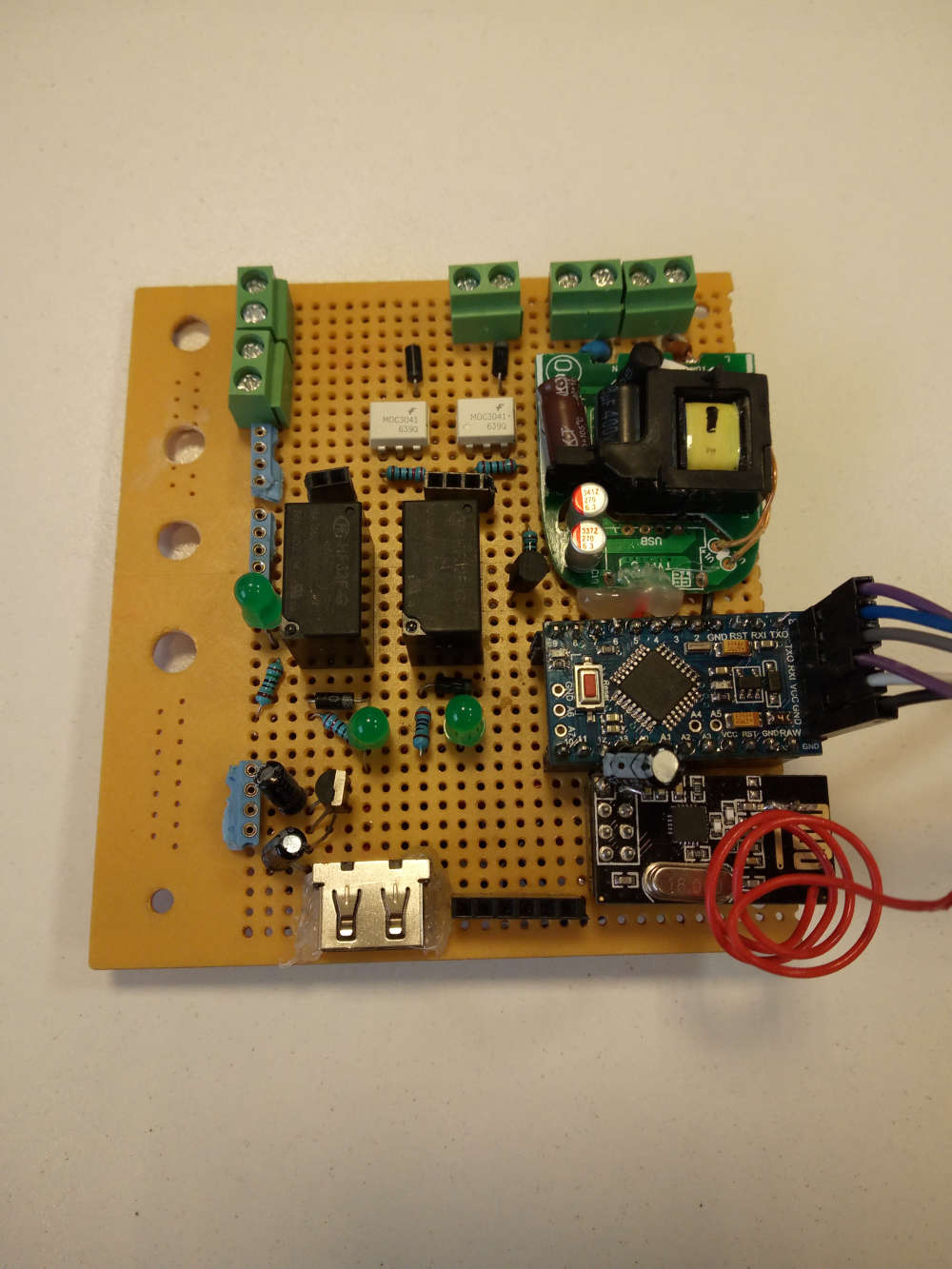
I would like to make a cleaner board, a real PCB but if i launch the manufacturing i wil get minimum of 10 boards that i do not need.
If anybody, could explain to me how i can print my own PCB for quick tests about some projects, some features implementations, it would be nice

-
@jeremushka Well, since you ask, you can use a CNC to etch and drill your own PCB: https://forum.mysensors.org/topic/8735/cnc-pcb-milling
A board such as yours would be fairly easy to do that way.
-
@neverdie thanks for the advice. Maybe i can first try pcb transfer with laser printer and chemical etching.
-
@jeremushka
I have used that several times with good results, though do not make wires too narrow and put them too close to each other.
-
@zboblamont lowering water temperature and pump speed is expected to use less energy, but have you considered the time it takes now to reach the set room temperature compared to what you had before?
-
@gohan Sorry, had to edit original post which was too confused on re-reading.
The pump speed curves determine the pressure and flow rate to the radiators, it is the radiators which determine the actual flow for a given temperature drop across them, and speed in raising room temperatures.
The combined flow rate for all the radiators falls within the lower pump curve, any increase in pump speed only increases pressure, NOT speed of heating.
Aside the original mis-set HIGH rate on the pump, there are 3 manual valves left in the system, and no matter how close I try to balance them it was always a compromise, and heat inevitably goes back to the return as pressure increases
Once these are replaced with flow control version in the next week, it will not matter what the pressure is, the radiator flows will be capped at the most efficient level.
-
My wife said "I do not want to see "those things""...
Challenge accepted!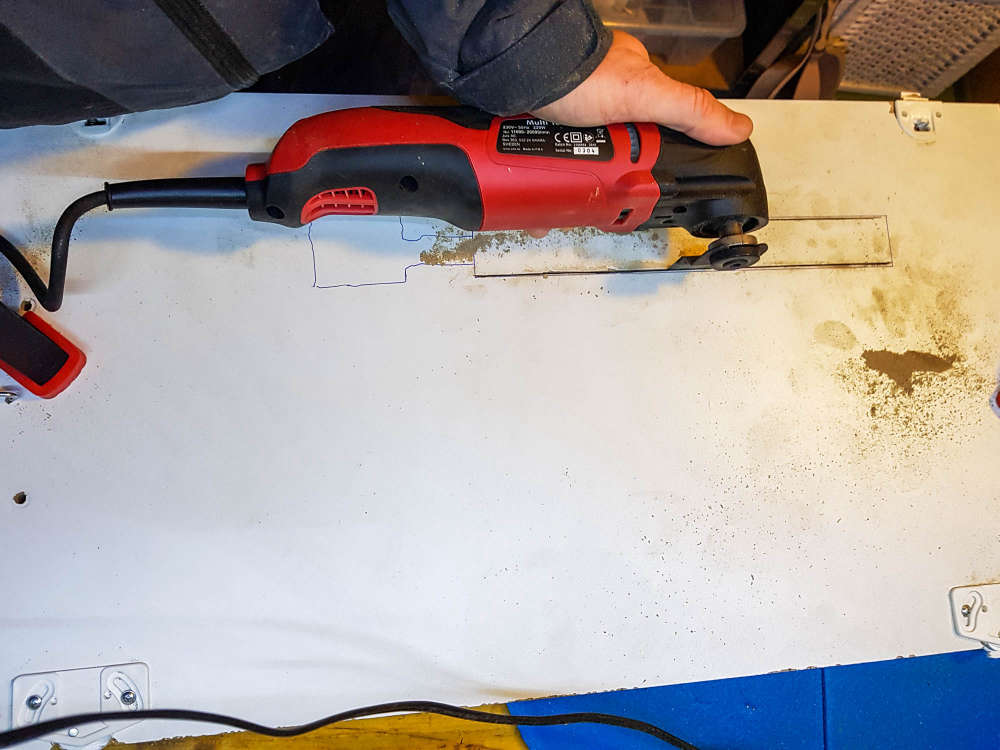
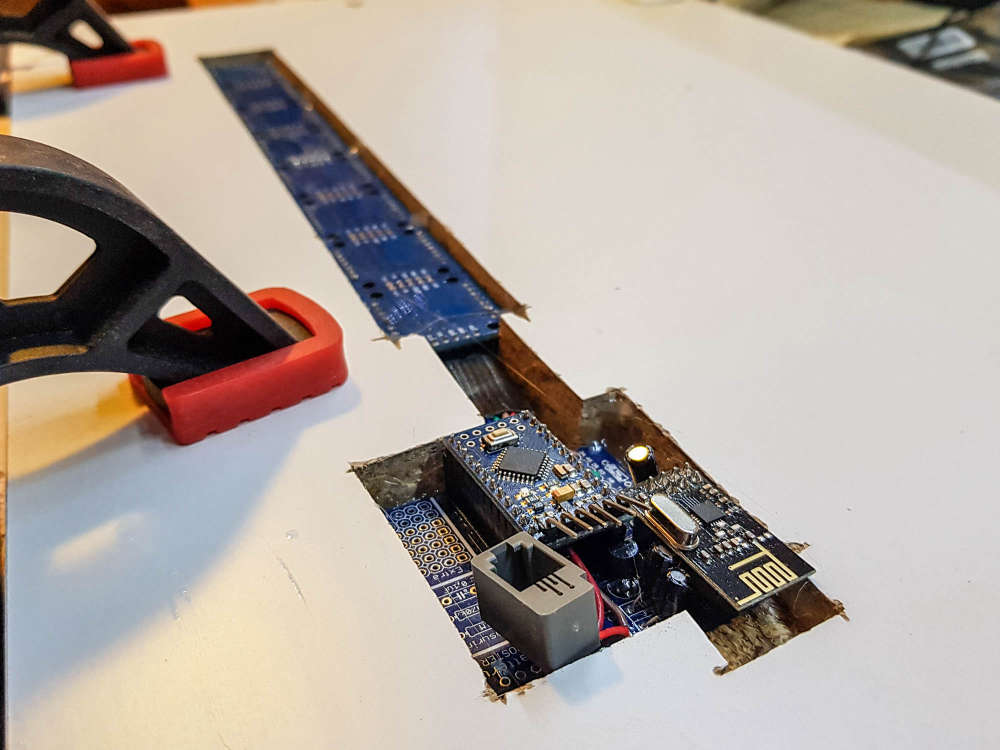
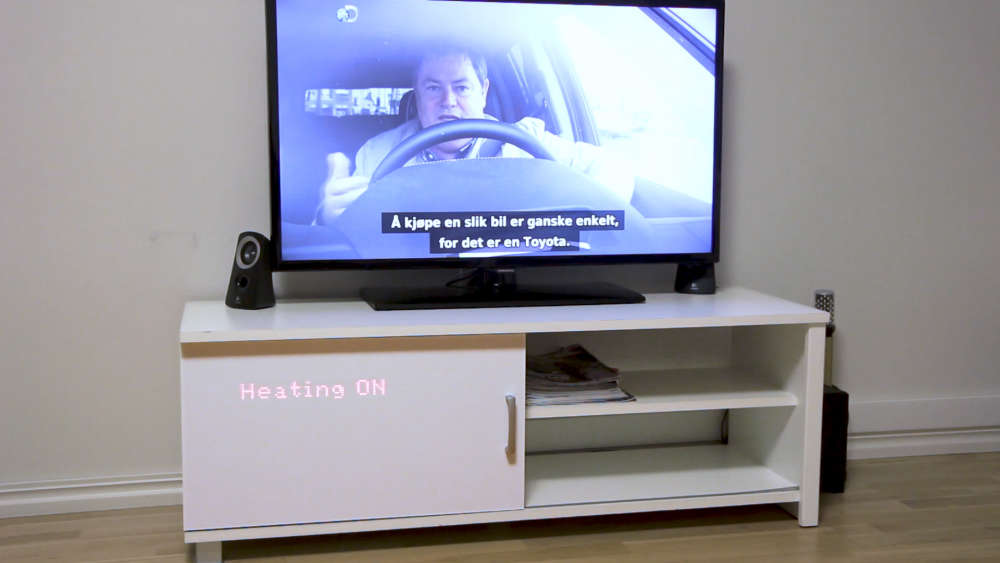
(see the gif in action here https://ibb.co/BCbS2Dc )
-
Milled some PCA9615 differential I2C converters for the sensors ouside: magnetometer for the gas meter, temp/hum, baro.
Until now I've used a 7 meter long cable, but whenever the gas water heater fired up the Arduino would just freeze losing the count of gas pulses, I've tried shielded cable but it hasn't solved the issue.
Since Sparkfun's breakout boards are on the wrong side of the pond I decided to make my own.
Really hope the Arduino doesn't lock up anymore.LE. That TSSOP10 was a b*tch to solder

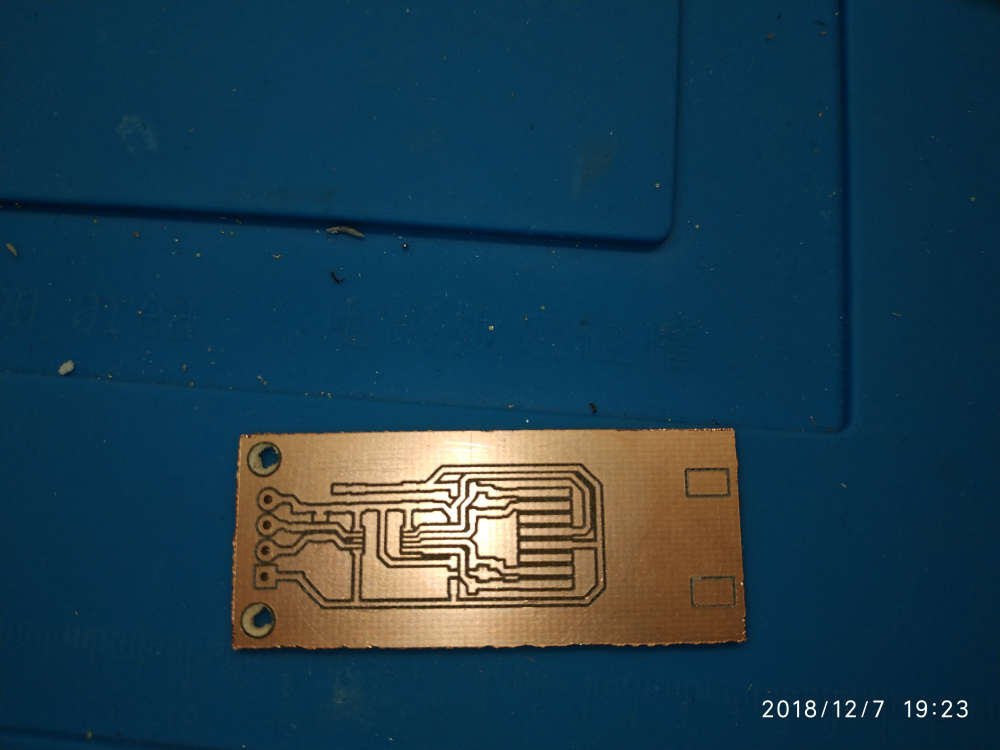

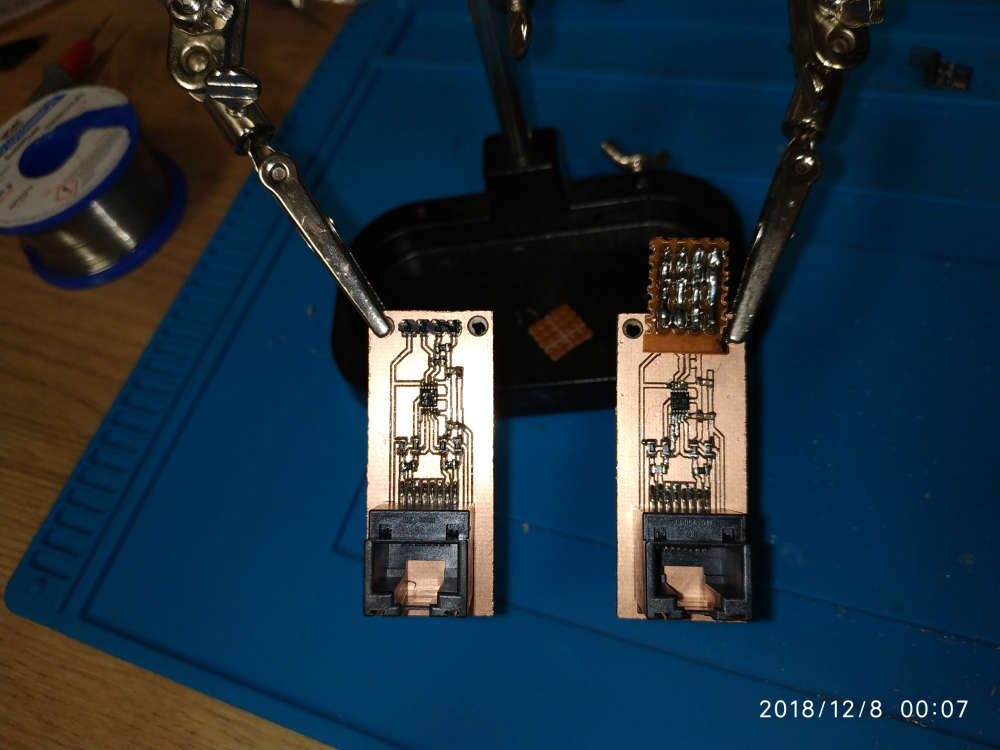
-
@dakipro woaw!!!

-
@dakipro thank you that's what I planned to do but wasn't sure it would be visible through the plastic layer.
Coupled with capacitive sensors it could give awesome results !
-
@dakipro
great job
, and also the show on TV is quite funny, those two Englishmen in US buying old cars renovating and selling those
-
@nca78 I used white decorative self adhesive wallpaper, so not sure which plastic you are planing to use, but you can easily test that before mounting I think. If you go for paper/foil, put some one-peace plastic in front of the displays as they (mine) are not perfectly soldered in line, so they are noticeable sa foil will glue to them. Not a big deal for me, but would love "the perfection". But yeah, plastic or some harder material would work awesome I think.
All in all, not difficult project and a very high wow-factor/time-spent value (and waf)
-
@dakipro ah ok you cheated

I thought you kept the plastic layer that's glued on top of the wood panel. I'll try to get some samples from the company selling those here and make some tests then.
-
@dakipro
BTW I can only recommend to spray your bare cobber wires with Plastic 70, as this will protect your cobber from corrosion with a thin layer acrylic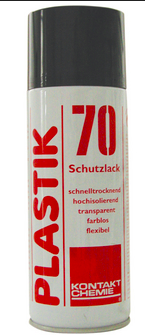
-
Try this one.
The smallest board I have ever assembled using just a hot fan. A solar battery charger based on BQ25504 from a solar panel. Almost all components are 0402. Far too small for my liking, but can go under the solar panel.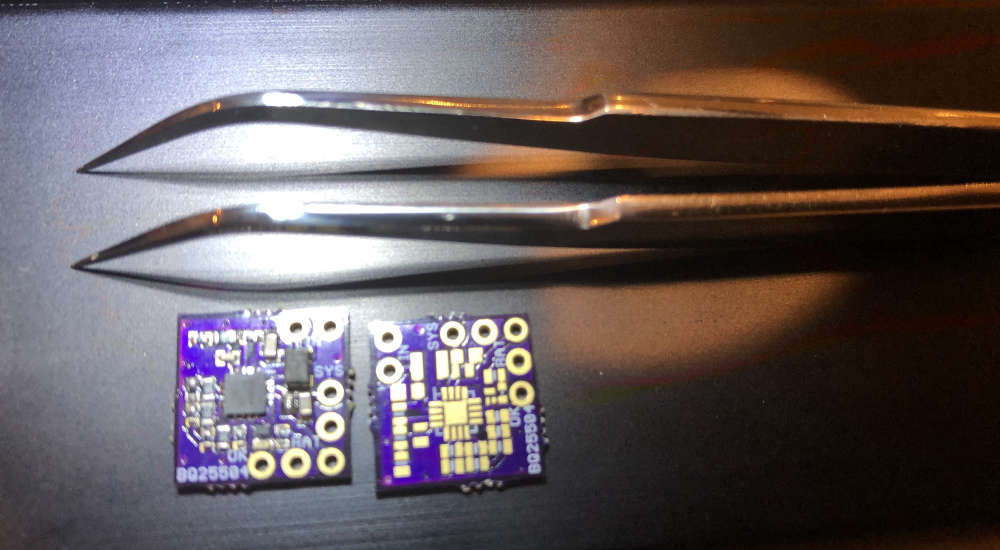
-
Looks great. I'm still happy when I get an 0805 down well. Guess I have to keep practicing.
-
@nagelc said in What did you build today (Pictures) ?:
Looks great. I'm still happy when I get an 0805 down well. Guess I have to keep practicing.
Try solder paste applied with a thin needle, and a hot air gun at minimum speed (so components don't fly away). Then it's really easy to do SMD

-
@nca78 there many other aspects. I’m using a low temp melting solder paste. I have been using only a top quality (no AliExpress) one from Chipquick. It has to be stored property in the fridge.
Using stencil may help. I’m not using it and have to doze the paste very precisely which is a challenge. This is why my soldering is not 100% consistent, but it works. With 0402 components it is not easy - the pad size is very small.
However, I must admit, 0402 are far too small. In the process, unless your space / lab is very well organised many components are lost. And a good magnifying glass / microscope is a must too. In the future, i’ll try to stick to 0805 or larger - these are a bit larger and more visible.
All in all, this is not as difficult as many people may think. With a little bit of practice, this can be done.
-
@nagelc try 0603 size first. I am sure you will manage it with 0402 with a good microscope ;-))
I’m still using a magnifying glass which is an extra challenge. Eventually I will have to buy a good microscope
-
@alexsh1 how much did one module cost?
-
Today i recieved my new mini-easy-pcb i posted some info about 3 months ago. This with a breakoutboard-daugher board for all "common" sensors in the MySensors shop. I want to create a small motherboard which can be powered using a battery but also can use the battery for UPS/backup if powered from another daugherboard. The motherboard should be standard and then I would be able to add 1-2 daugherboards to specify the node.
The breakoutboard is just for test, but can be used by newbies offcourse.
My wish is to create the ultimate security sensor running on 12v but with a battery backup. It should include motion, temp, smoke and light.
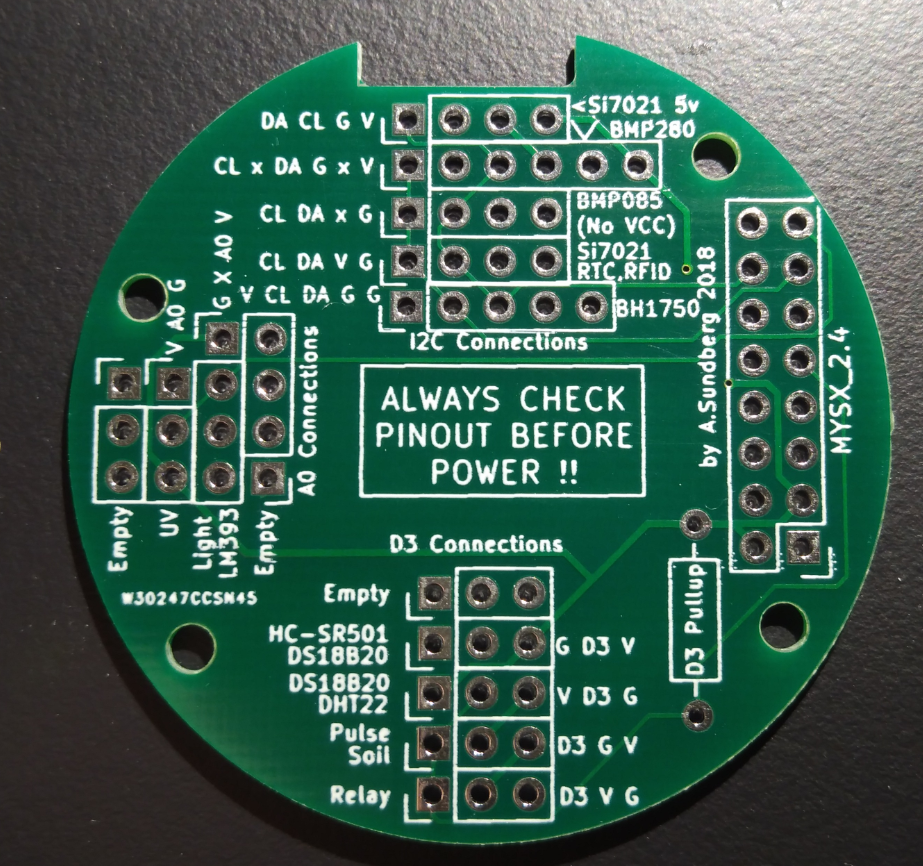
Il will get back in another 3 months when tested

-
@sundberg84 Nice job.
-
@nca78
Thanks for giving me a push. I had used hot air only for removing parts. I got some paste and populated my first board. So easy compared to the soldering iron.
-
@gohan module? you mean the PCB? or total?
-
So for some time now I have been working on a conversion to my 3D printer to allow me to change between different tool heads easily, thus increasing the versatility of the machine. To jump right in and give a little background on the mod, I have a plate that mounts to my X carriage that has 4 10mm neodymium magnets in it. These magnets hold the tool in place that will be used which also has 4 magnets in it's mounting plate.
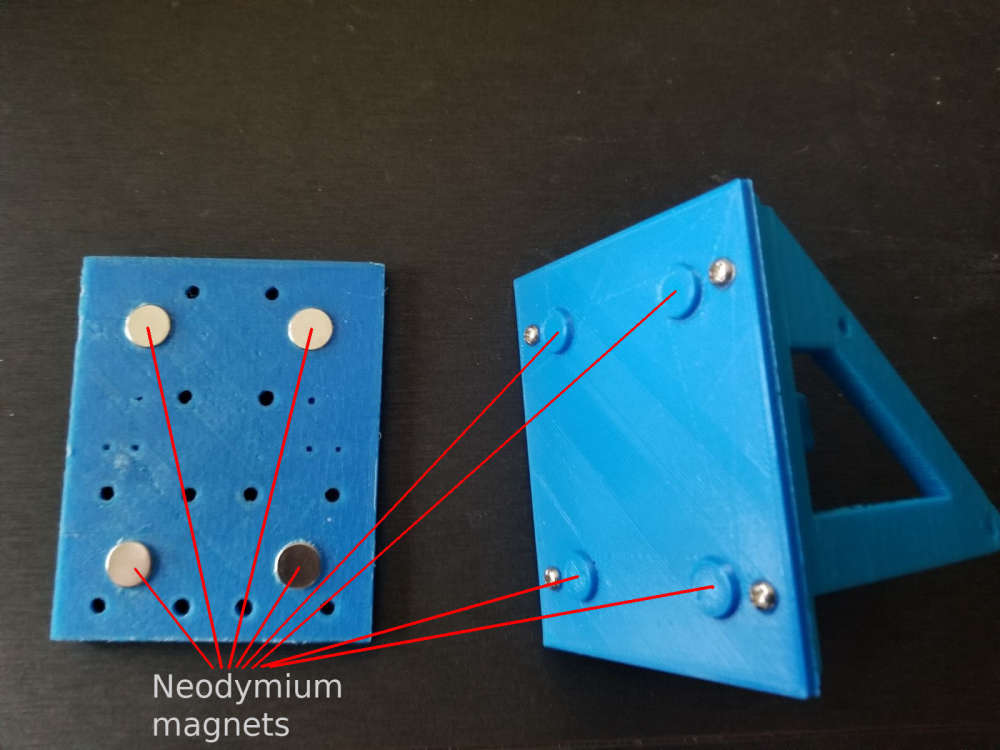
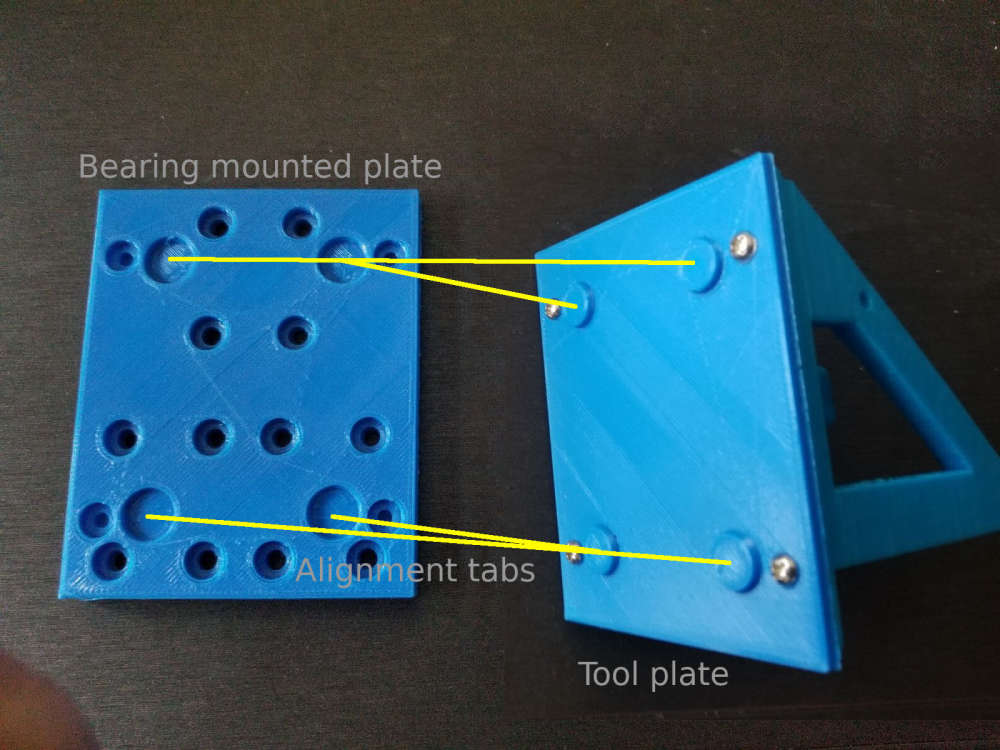
The first tool that I did was my 3D printer head. I obviously did that one first because I would need that to make future parts and tool heads to expand the machine. Here is my 3D printer head mounted to the working assembly.
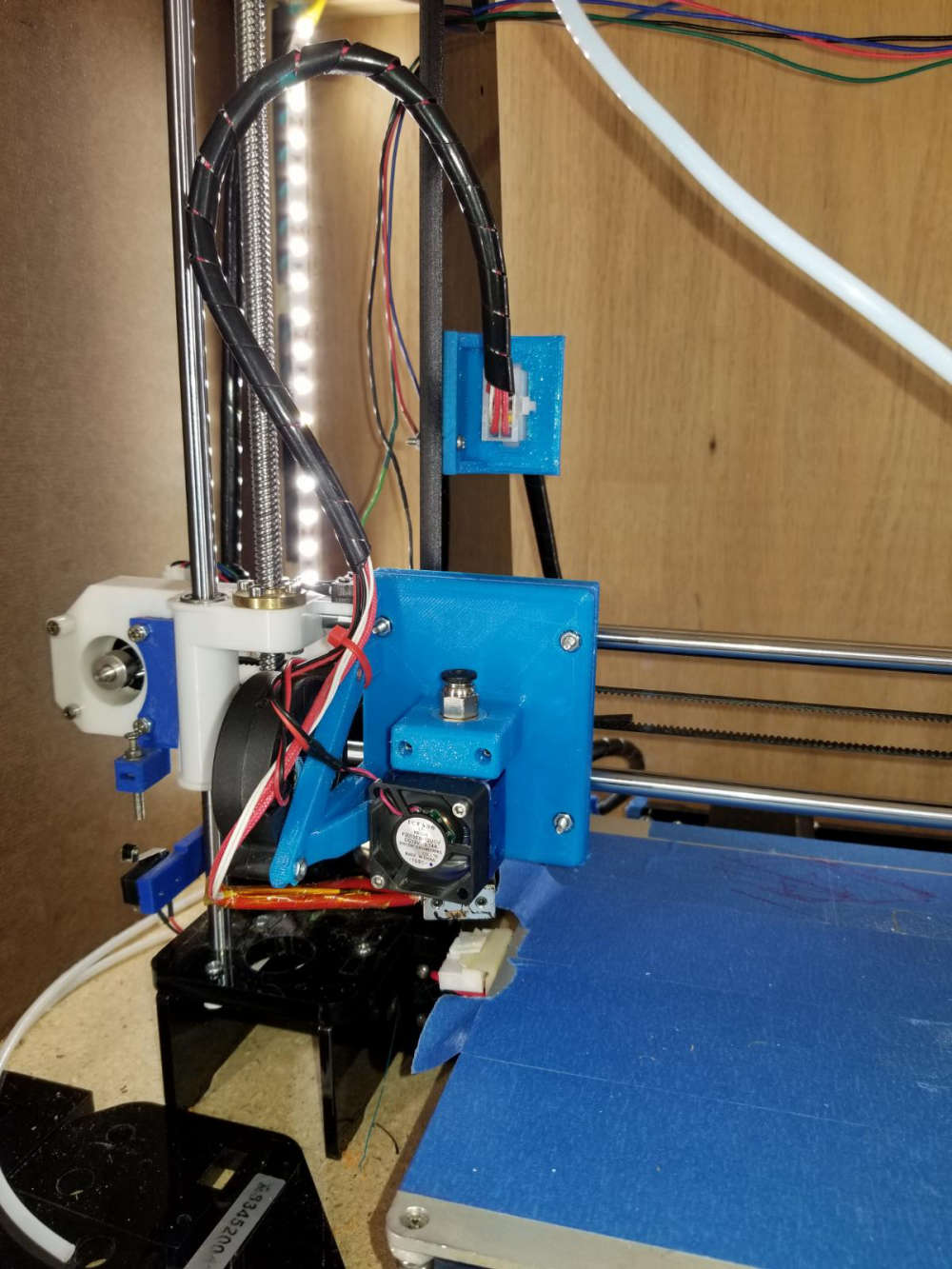
Another tool head that I made for this is my simple pen plotter tool for drawing.
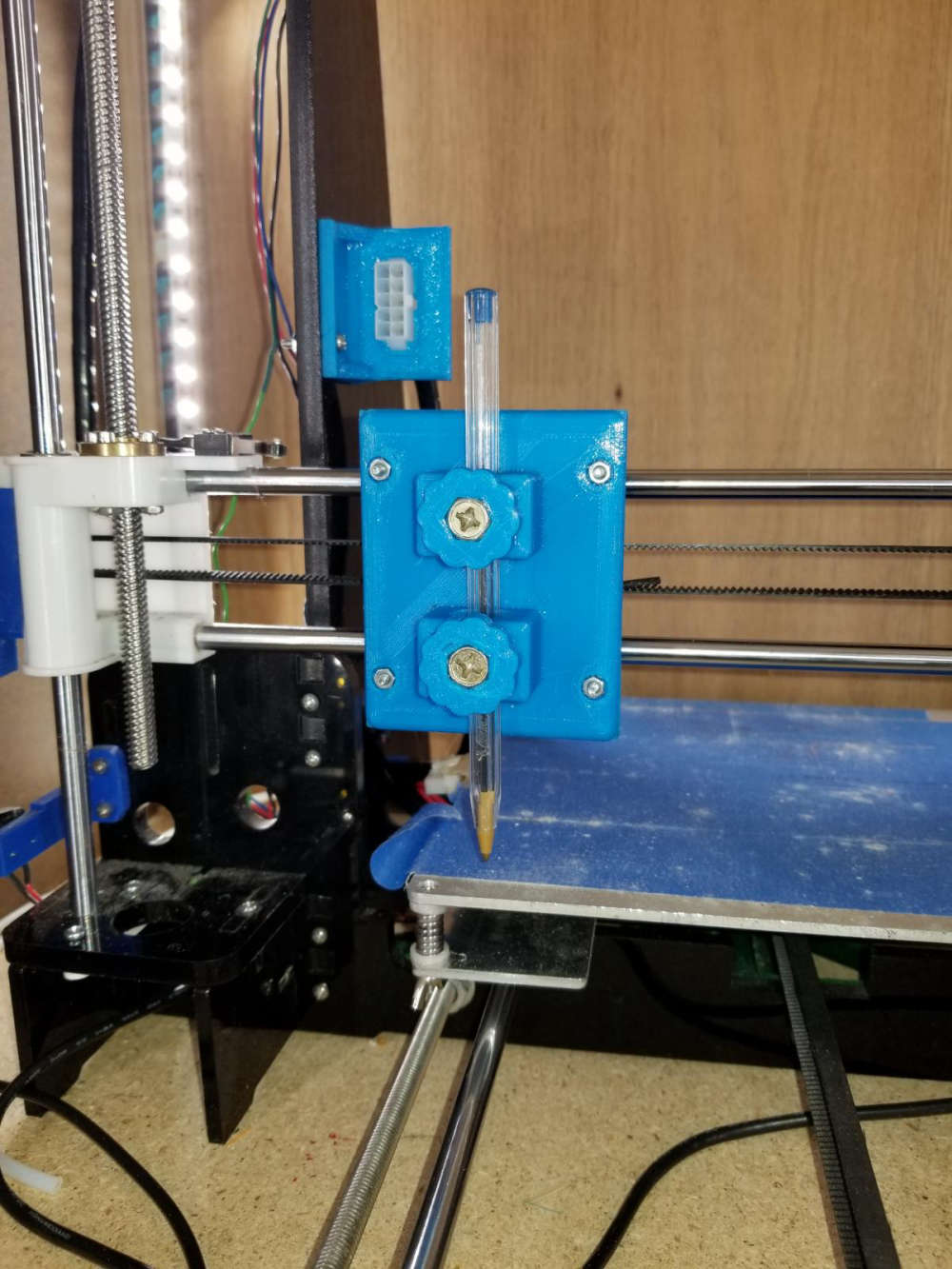
Here is a sample of something I did with the pen plotter using fine point sharpie markers. The left is the original image, and the right was done with the plotter.

The most recent tool head that I did was my laser engraver tool. This tool is the main reason for this post. This is the 6 watt laser module mounted to the carriage.
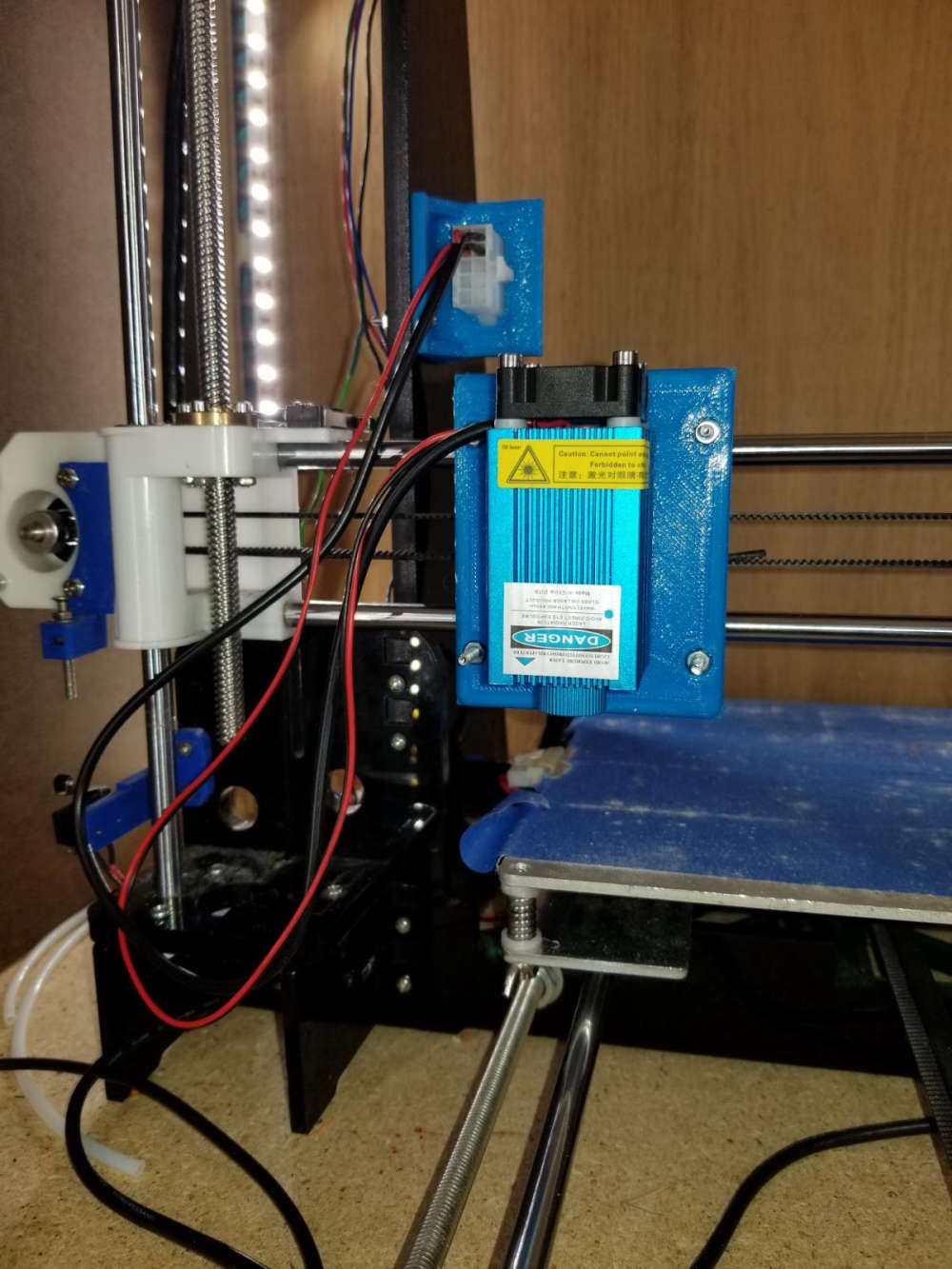
So what I am looking to do with this on the MySensors end of things is to build some sort of flame sensor that can monitor the engraving operation to indicate a small fire and take some sort of action, and also report it to my vera controller. Exactly what action I would have it take I have not figured out yet. If anyone has suggestions I'm all ears. I was thinking of something that could easily extinguish the small flame. As for the flame sensor, I know they make these small flame sensor modules, but I don't know how reliable they are, ore even how they work.
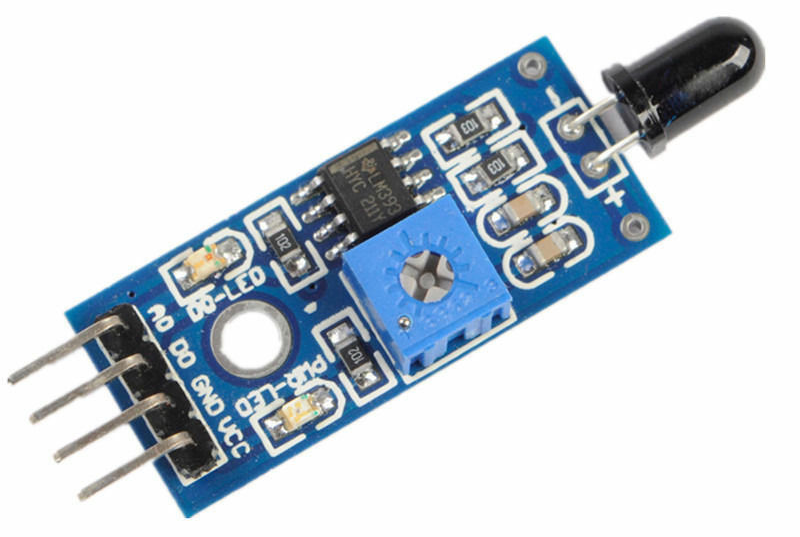
For anyone interested, here is a sample engraving on a piece of thin plywood. The left image is the original. The center is at a low resolution, and the right one was at a high resolution.

One other thing that I want to test with this is I've seen people that make circuit boards with these. They spray a layer or two of paint on their blank copper clad and then laser etch their pattern on the painted surface. Then they run it through their ferric chloride or other etching solution. Finally, sand off the layer of paint.Any suggestions or help people can give is greatly appreciated. Thanks for viewing.
-
@dbemowsk https://www.instructables.com/id/Make-a-Fire-Extinguisher-From-a-Soda-Maker-Gas-Cyl/ maybe?
-
@mfalkvidd Not a bad idea. I could get a CO2 canister with a solenoid valve and hook it to a hose that would blow CO2 directly onto the flame to put it out. Since my 3D printer is in an enclosure, it should contain the CO2 helping further extinguish the flame.
